TIRUVANNAMALAI — A holy town akin to Kashi and Ujjain. Situated around 195 kilometers away from Chennai, the town has so many temples, ashrams and ascetics, that there is a spiritual aura around the place. Ramana Maharishi spent a greater part of his life meditating and preaching around the Arunachala Hill. His ashram is one of the places where people throng, to this day.
What holds centerstage in the town is the towering Arunachala Hill, with the Annamalayar or Arunachaleshwara temple at its foot. The ancient temple has been mentioned in 7th century scriptures and was patronized by successive dynasties of the Cholas, Pandyas and the Vijayanagar rulers, as well.
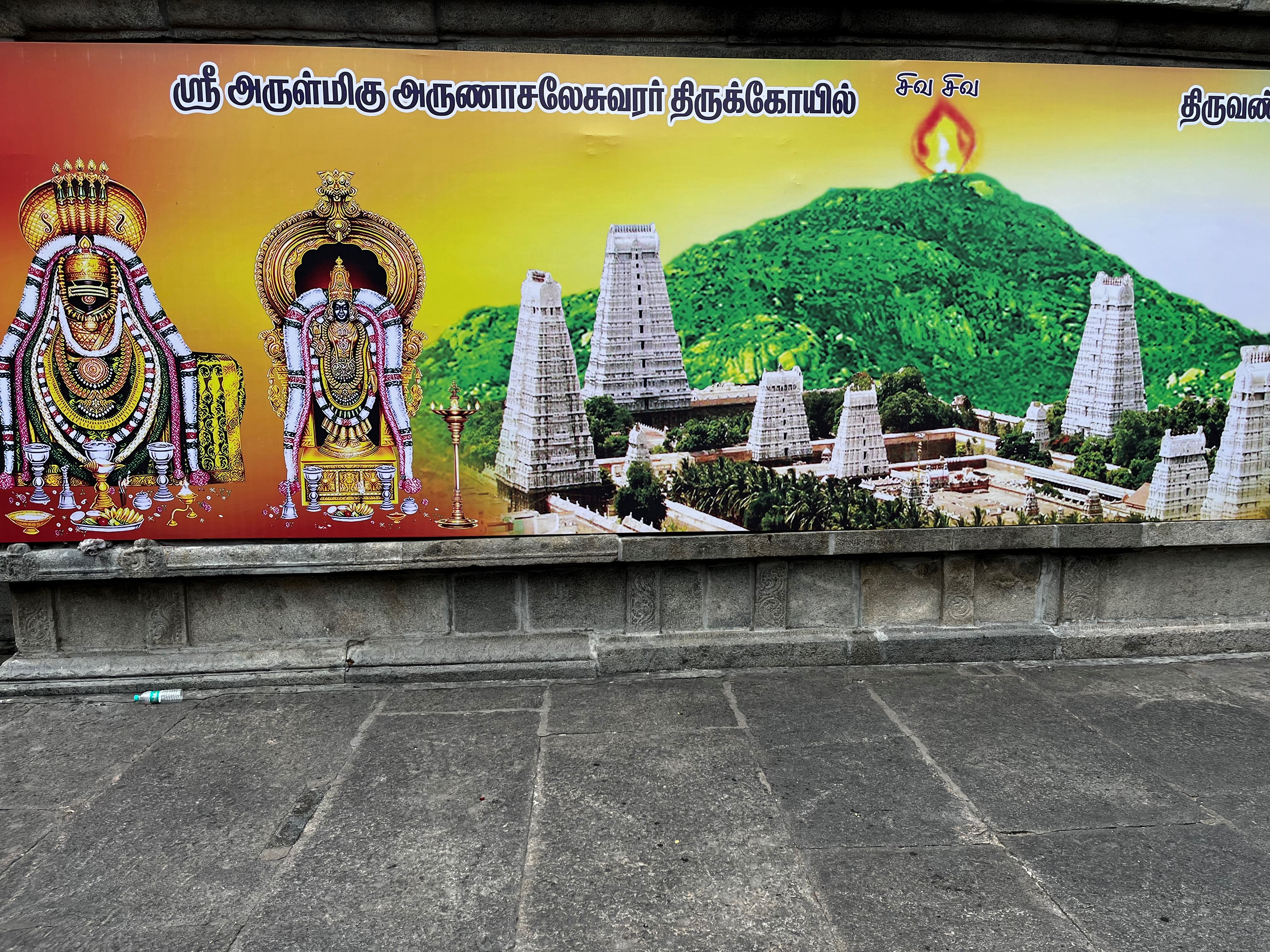
The presiding deity is Shiva, worshipped here as Annamalayar or Arunachaleshwara and his consort as Unnamalai Amman. This holy shrine is one of the ‘Pancha Bhootha Sthala’, where Shiva is said to have appeared on the top of the hill as a column of fire. The Pancha Bhoothas are Land, Air, Water, Sky & Fire. While the lingam in the temple is worshipped as Arunachaleshwara, the Arunachala hill behind is also considered a lingam itself. On the day of Karthgai Deepam, a huge cauldron of fire is lit on top of the hill, with tons of ghee. The fire is visible miles around and, on this day, Tiruvannamalai town remains packed to the rafters.
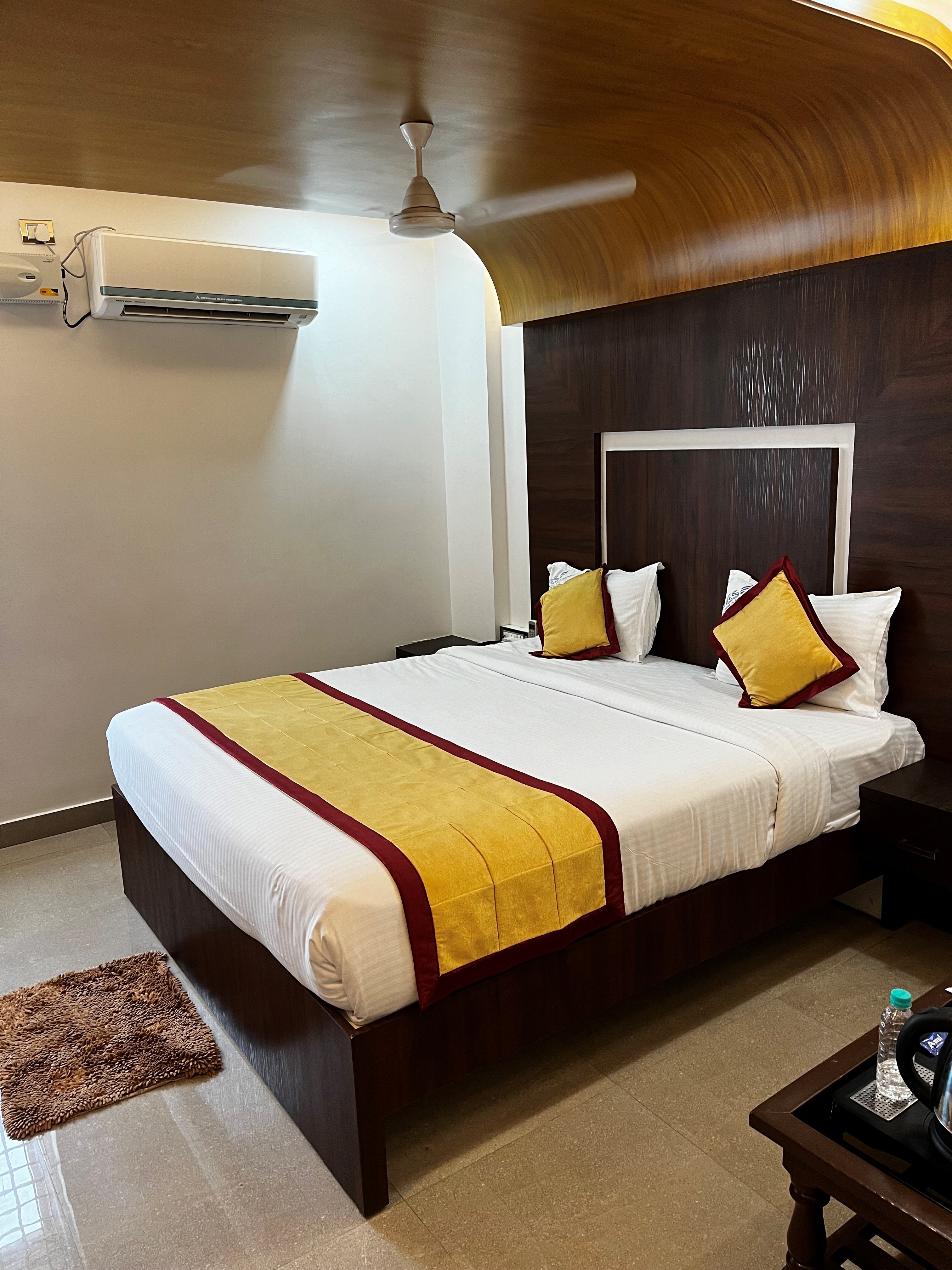
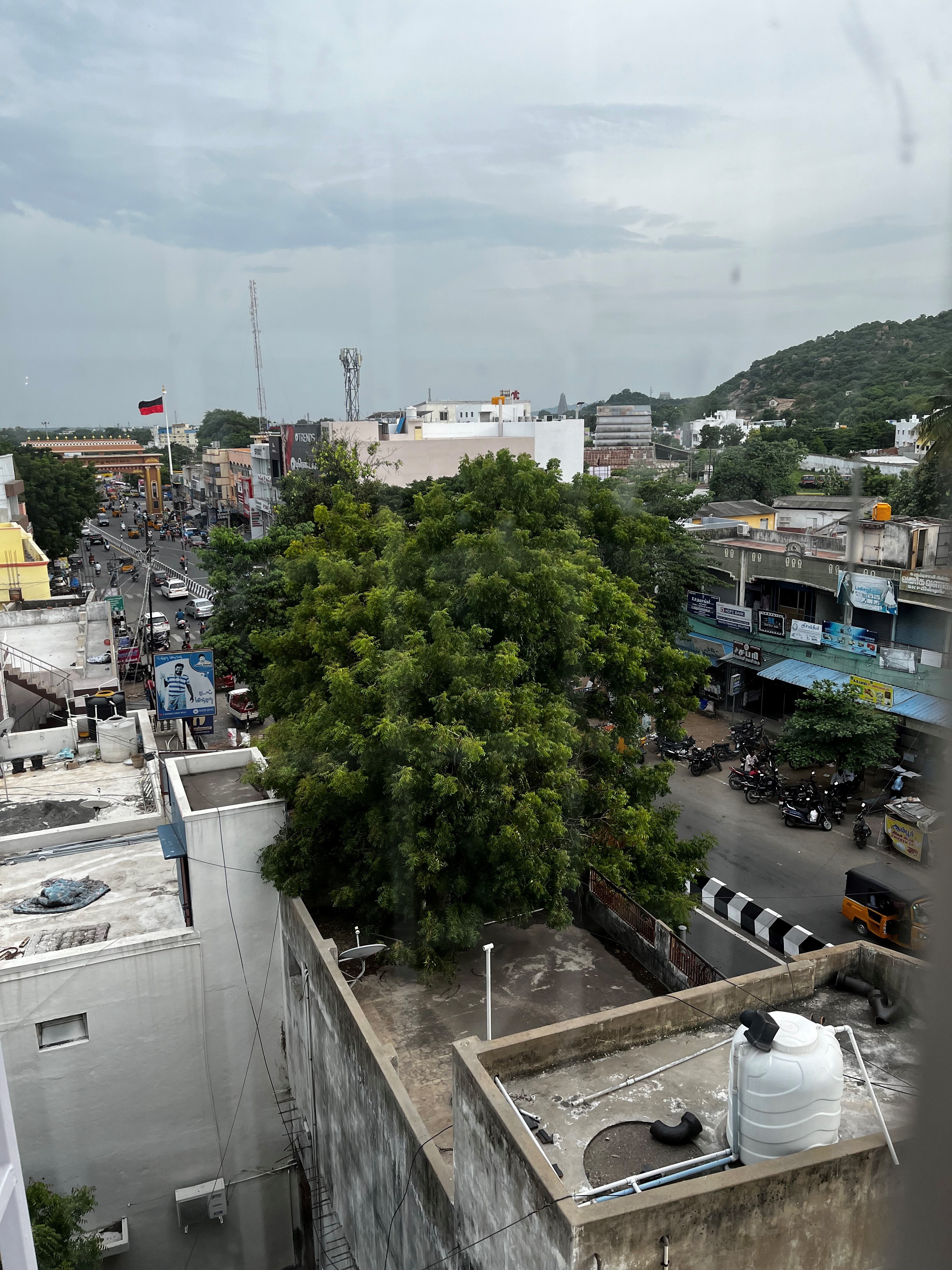
We checked into Hotel Arunachala Residency on a Friday afternoon. Looking out from the window, we could see the Arunachala hill and two gopurams or towers of the Annamalayar temple. The temple has hour outer gopurams — The Raja Gopuram (the second tallest in Tamil Nadu), Thirumanjana Gopuram, Pey Gopuram & Ammani Ammal Gopuram. After, short nap, we freshened up for a visit to Annamalayar. A short drive and soon we were in a narrow street in front of the Ammani Ammal Gopuram.
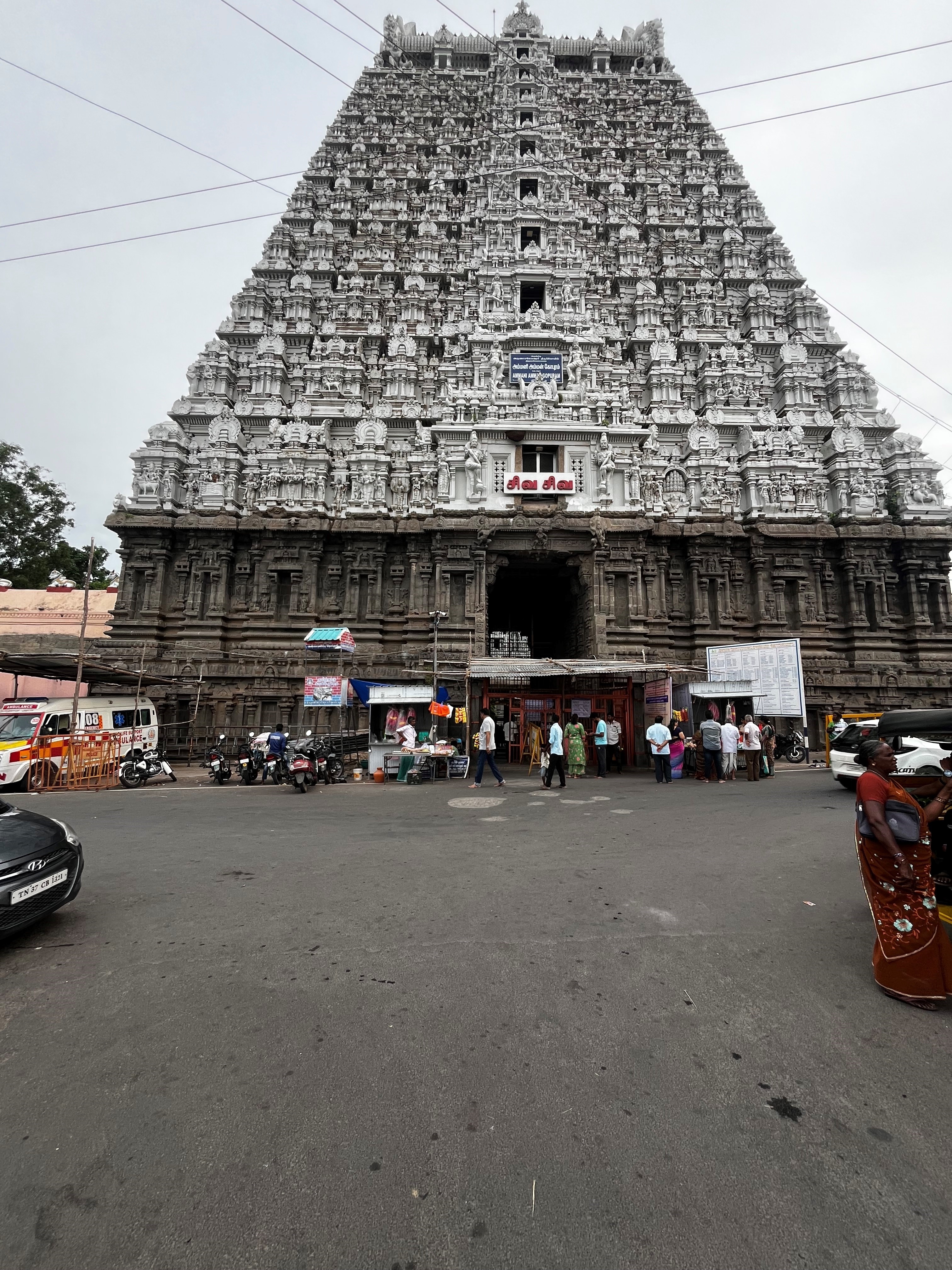
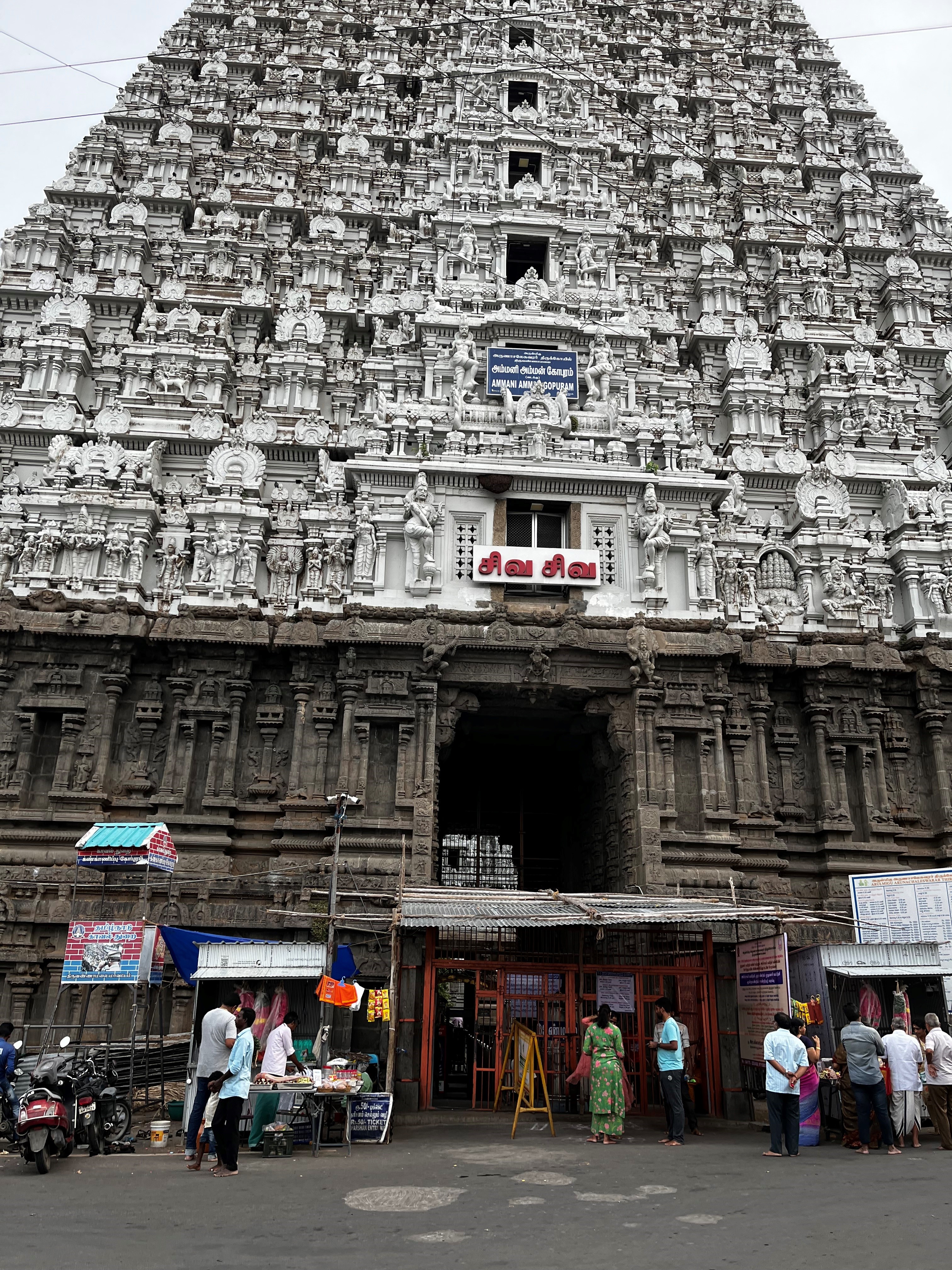
We stepped inside, walked along straight, and then we were in a courtyard, where we could see devotees resting or lining up to go inside. Usually, there are huge crowds at this temple, but we were lucky. Purchased a Rs.50 special darshan ticket, walked a few steps on a small steel staircase and lo and behold, we were before Annamalayar in all His glory, the lingam surrounded by lit lamps behind the top. Had a good darshan, then moved to Unnamalai Amman’s shrine inside the same complex. Admired the long corridors, the carvings on the walls and pillars, even as the faint scent of old temples hit our nostrils ……… an inexplicable scent of used flowers, ghee, camphor, oil and so on.
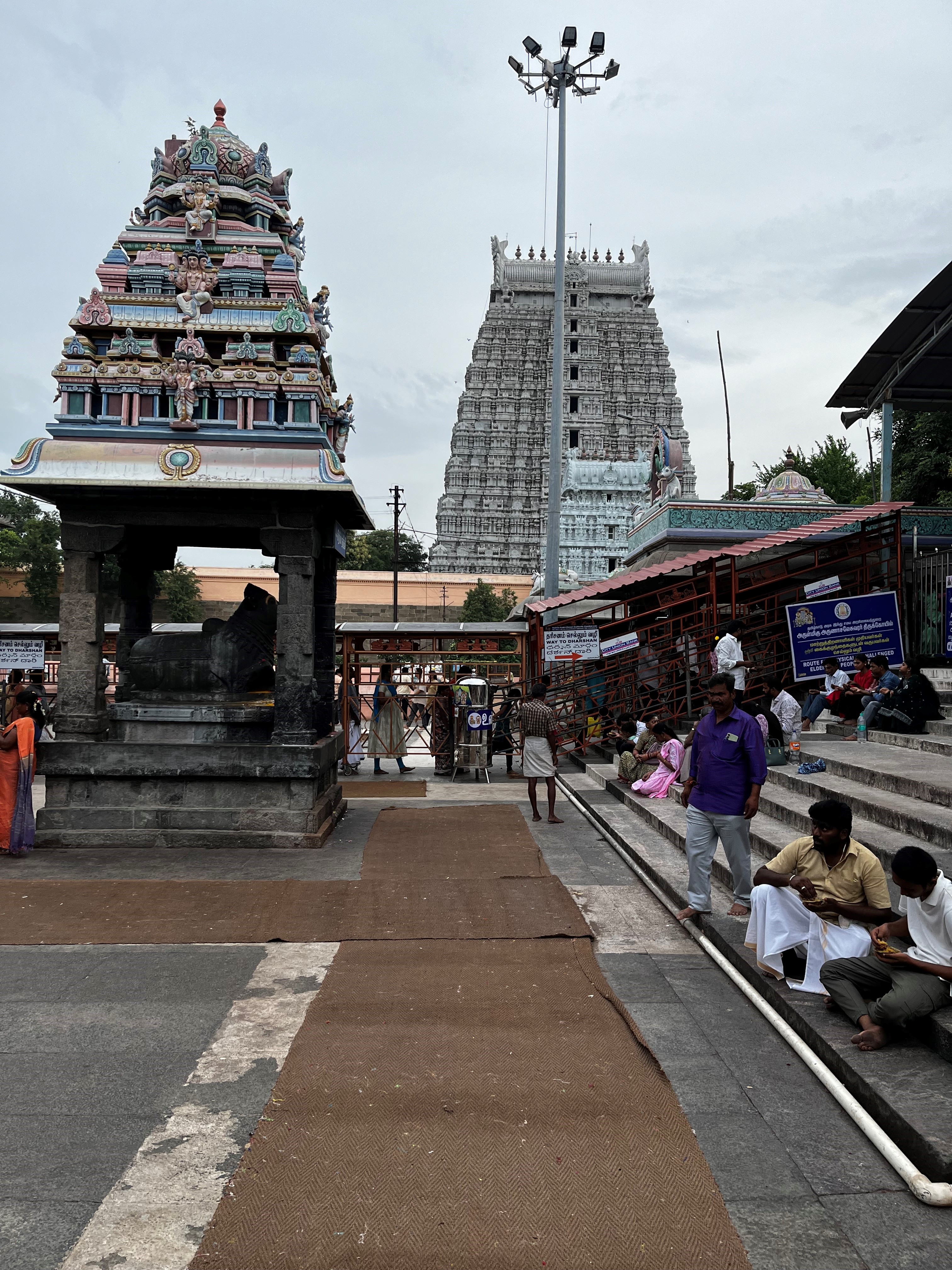
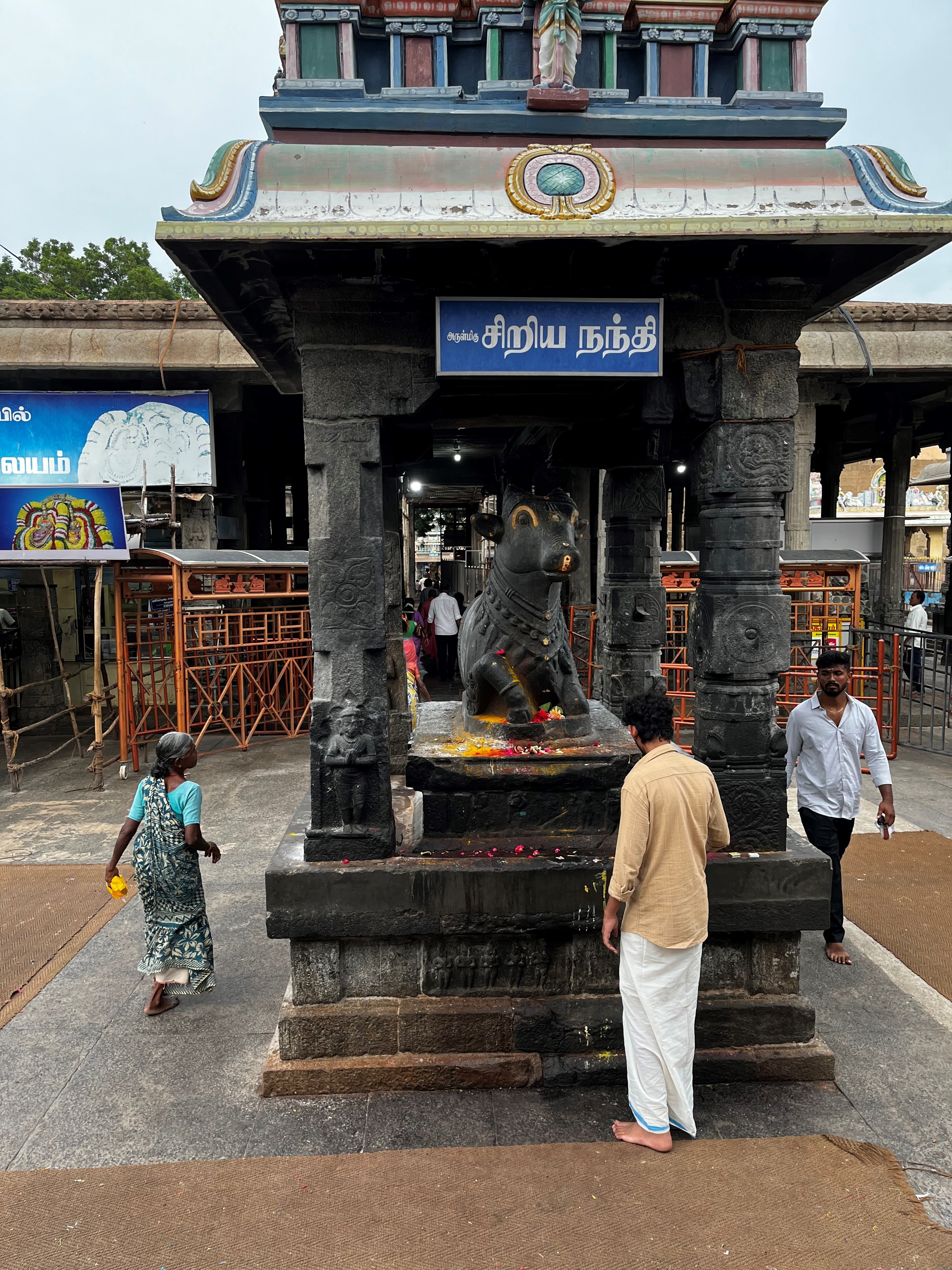
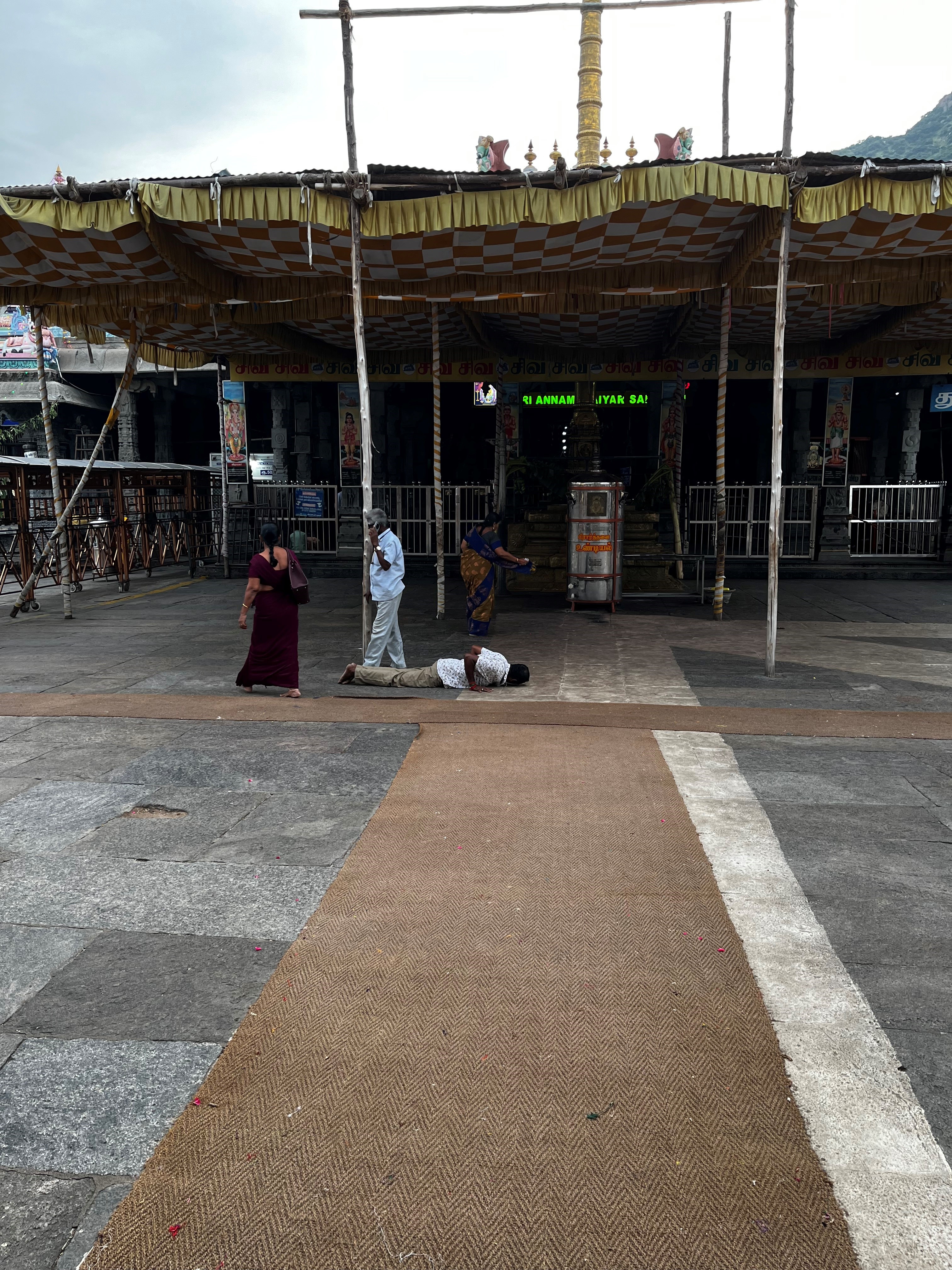
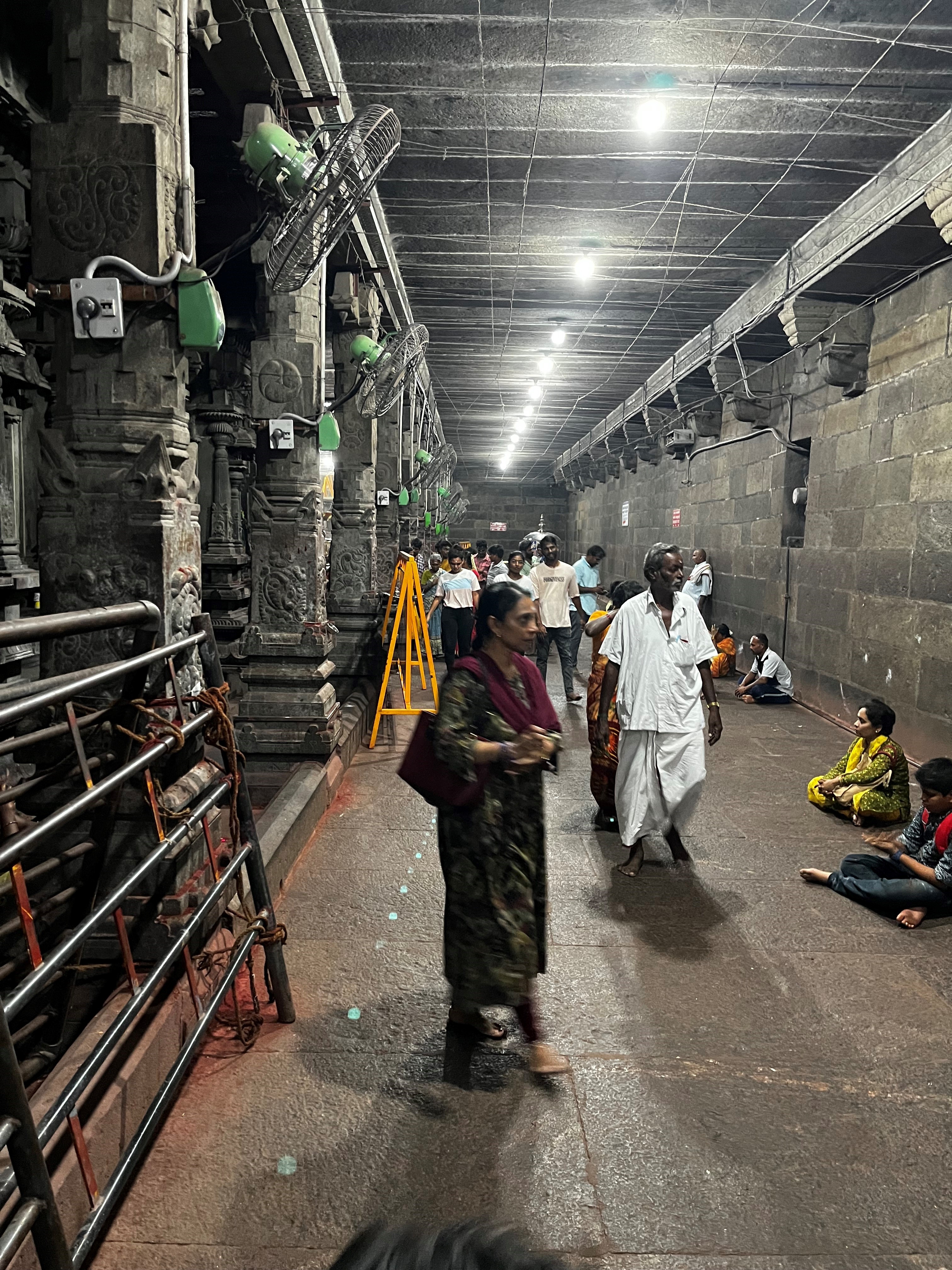
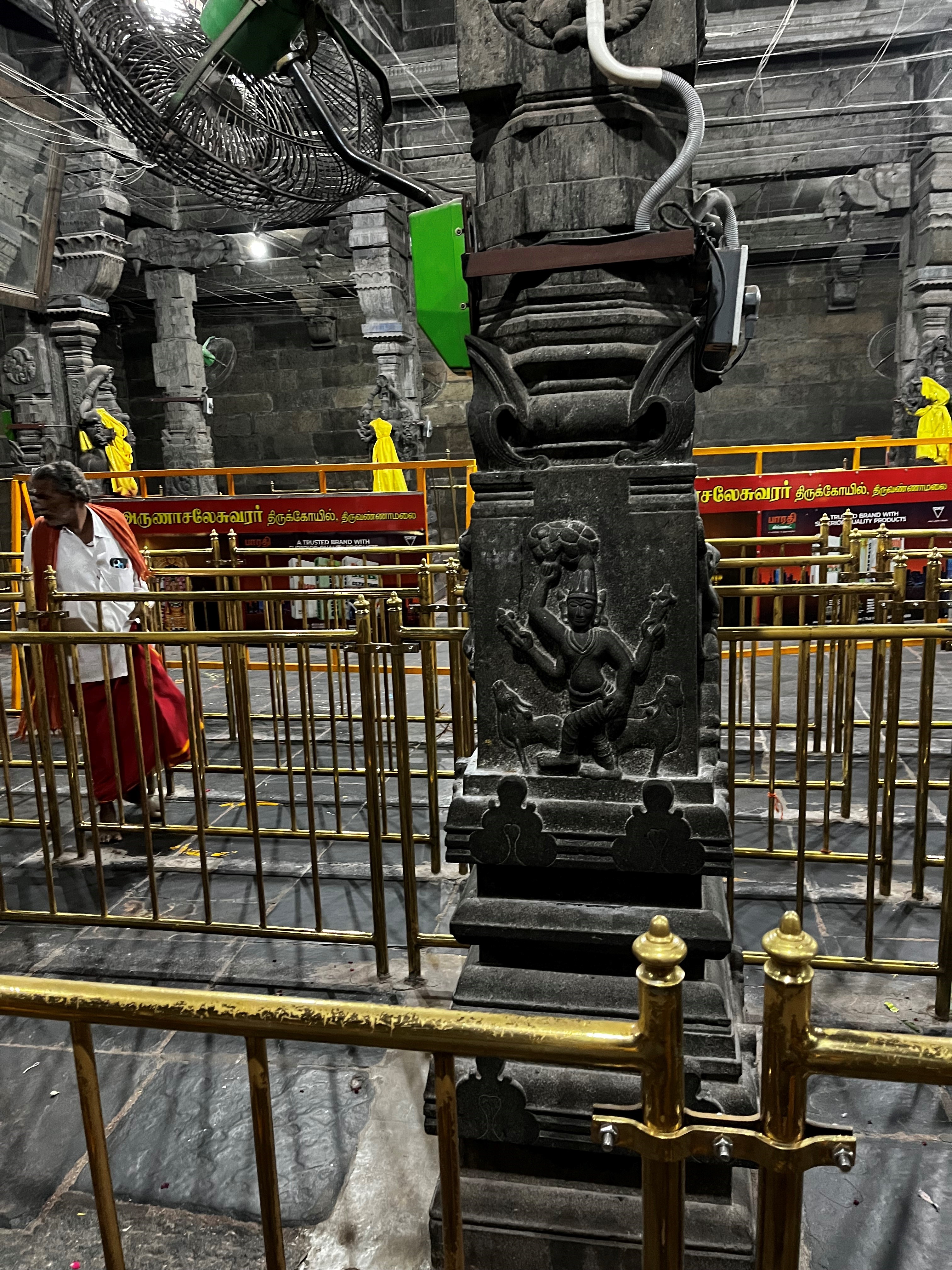
Back in our hotel, people were surprised that we had a quick darshan. One fact that has to be pointed out is, surprisingly there are no big restaurants, and the choice of food is quite limited. Wonder why? Decided to go to bed early, as we had plans to do the Giri Valam, the next day.
GIRI means hill or mountain and Valam means circumambulation. So, Giri Valam involves circumambulation or parikrama of the sacred Arunachala hill, covering a distance of around 14 kilometers. On full moon nights, thousands throng the Giri Valam route, that comprises a broad motorable road (on which vehicles do ply), with wide pavements on either side, portions of the road being shaded with trees. Resting places, eating joints and even foot massage facilities are available on the route. Giri Valam can be done on any day or night. There are a large number of temples, ashrams, meditation centers and samadhis of ‘Siddhars’ on either side of the road. It is believed that performing the Giri Valam should be the aim of every person, as it is the easiest way to spiritual upliftment. It is believed that even Brahma, Vishnu and Rudra, performed Giri Valam, before they could comprehend Arunachala, as He appeared as a column of light (Jothi Sthamb). Giri Valam is the right way to worship Arunachala.
We set off early in the morning 4.30 AM, after checking with the hotel, if it was safe to walk in the dark. We were reassured that it was ABSOLUTELY safe, even for ladies to walk alone at night, as there will be so many people walking/resting on the pavements 24 X 7. Moreover, there are two police stations on the Giri Valam route and patrolling happens regularly.

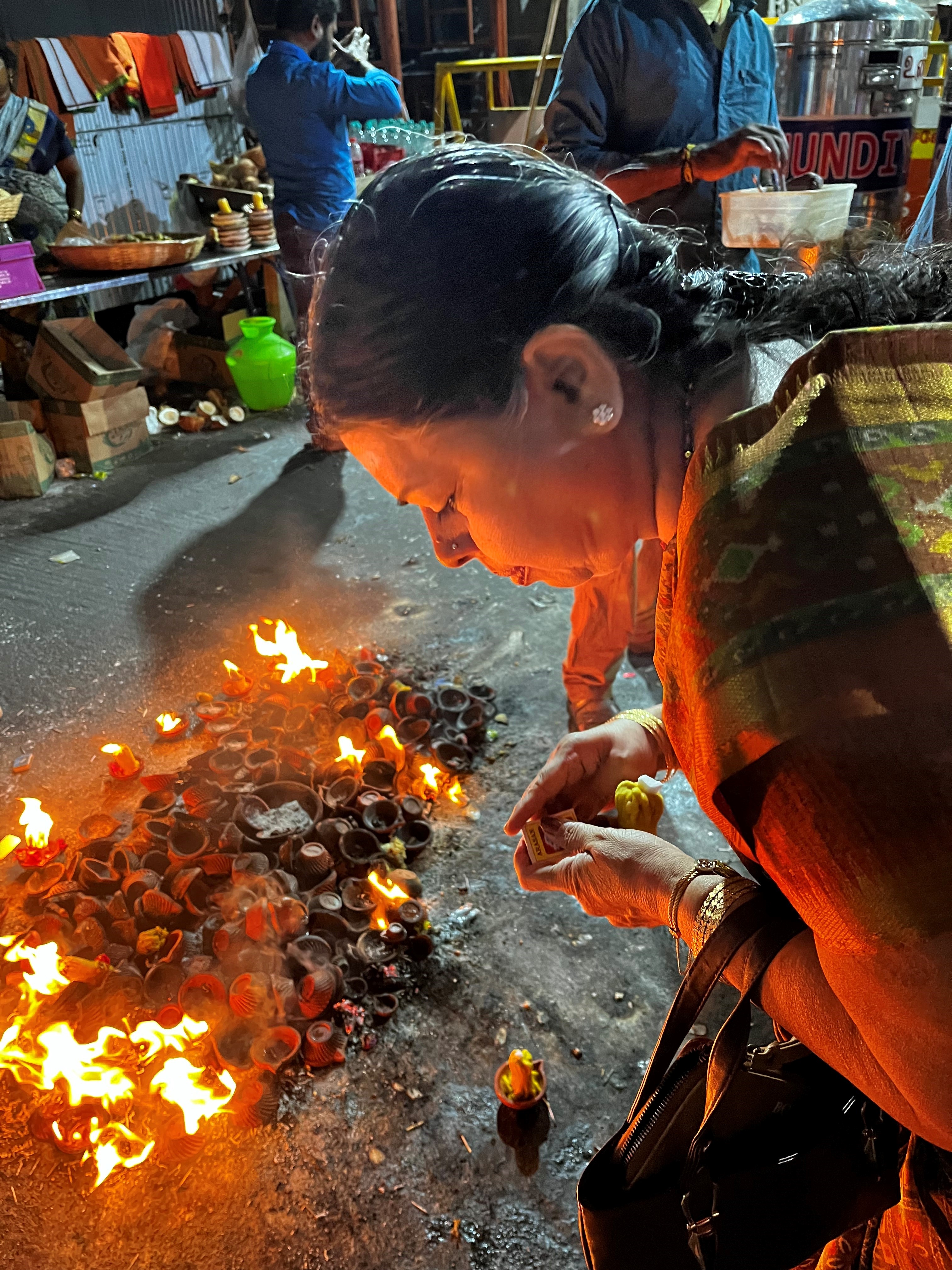
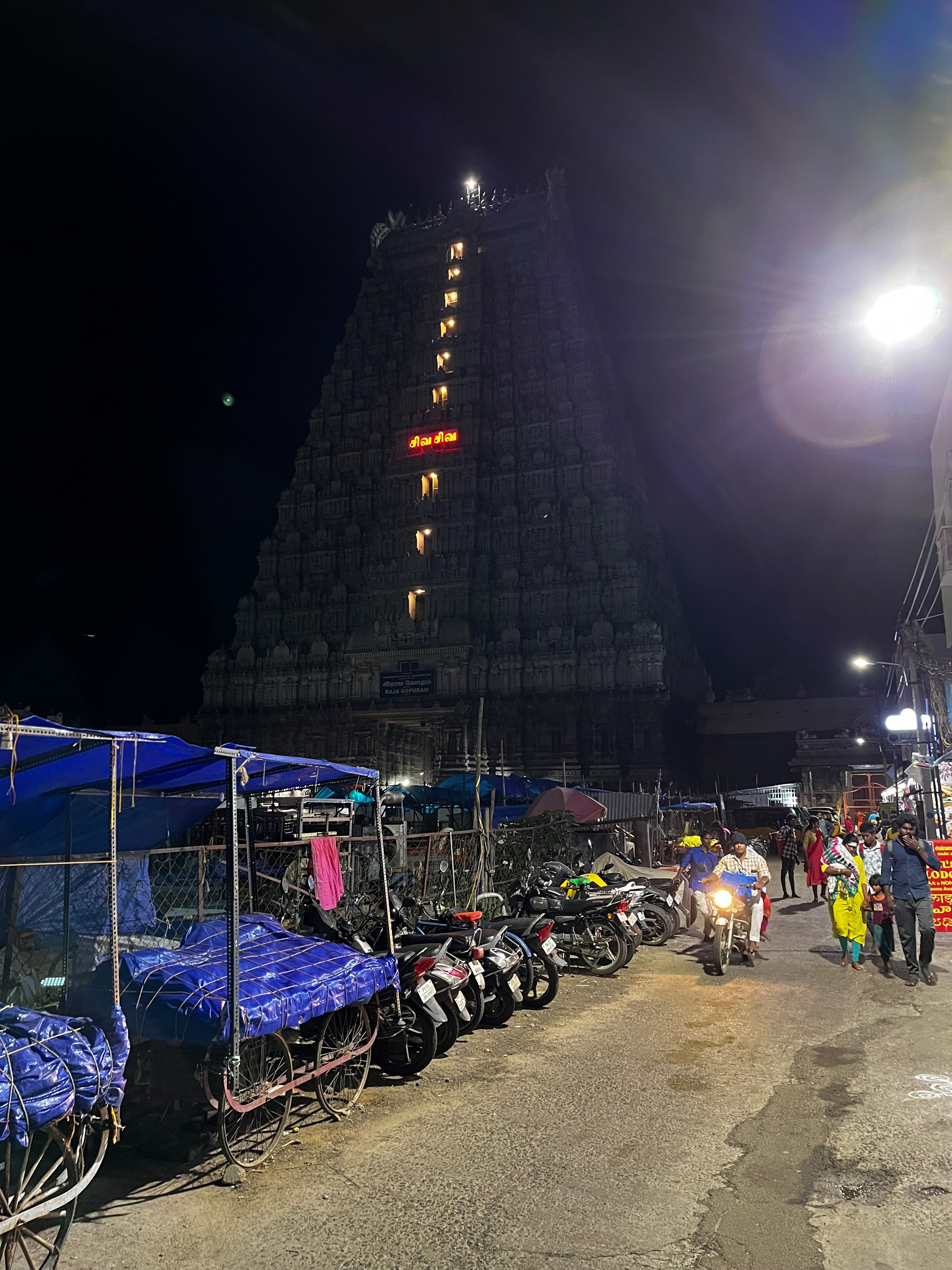
Starting off in front of the Raja Gopuram, by lighting an earthen lamp using ghee, we began the Giri Valam. There are a lot of stalls selling lamps, ghee, flowers, even at that hour. Walked briskly through the street and came out on to a bigger road, with closed shops on either side. It will be difficult, if not impossible to visit each and every temple and ashram on the Giri Valam route in one go. We had decided that we would worship the eight lingams, representing the eight directions (Ashta Lingam) and the two lingams of the sun and moon. The Ashta Lingams are said to have been installed at their positions by a Siddhar from where their powers/radiations are the highest. The lingams represent, not only the eight directions, but the different stages one’s life. Each lingam is named after a planet, Star or Rishi, who it is believed, worshipped Arunachala from that spot. Soon enough, we were at the first lingam — Indira Lingam, the small temple tucked between two shops on the busy road. You have to climb down a few steps from the road level to have a darshan of the lingam. Just a few devotees, at that time. This lingam represents childhood and the Eastern direction
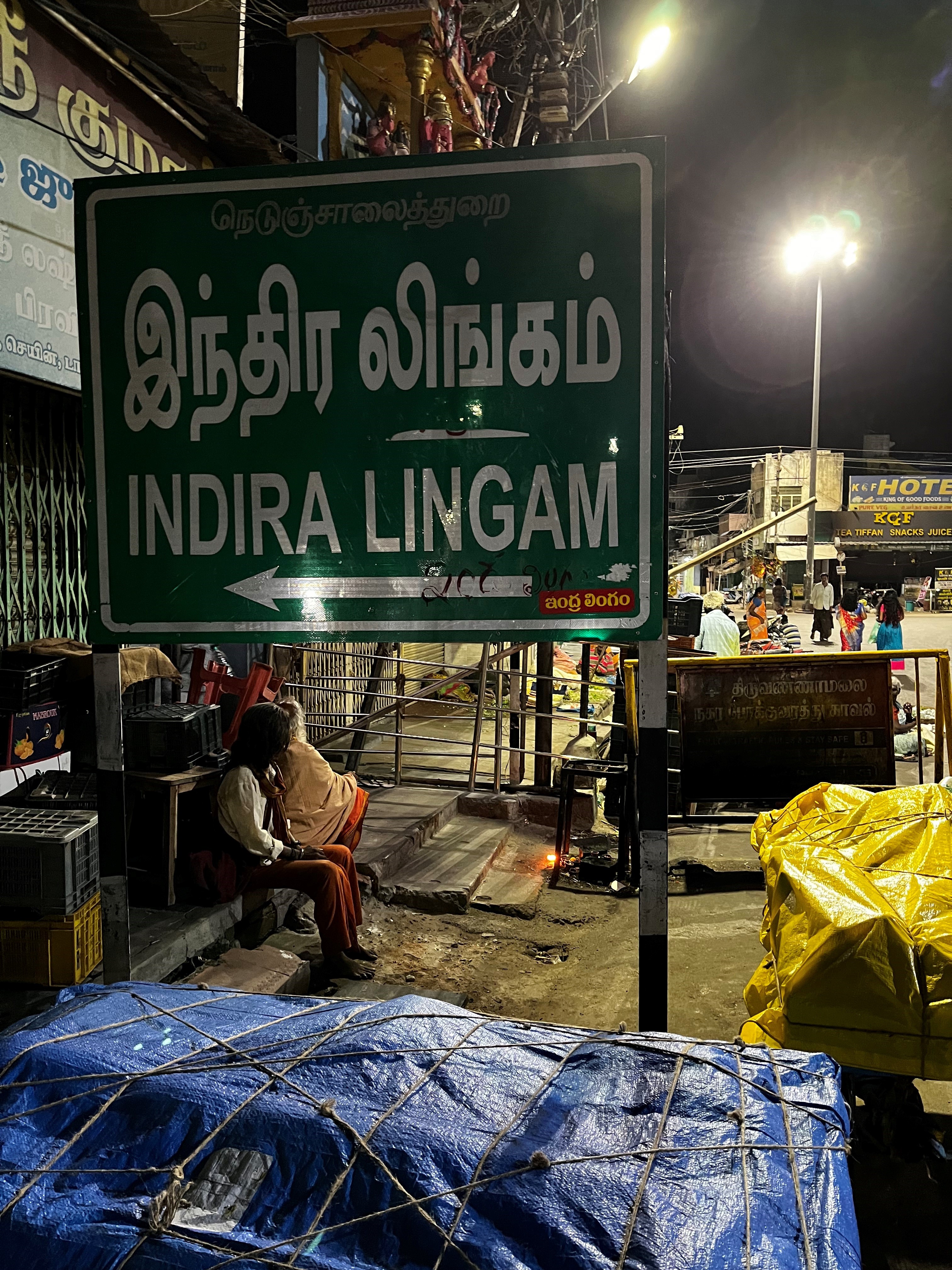
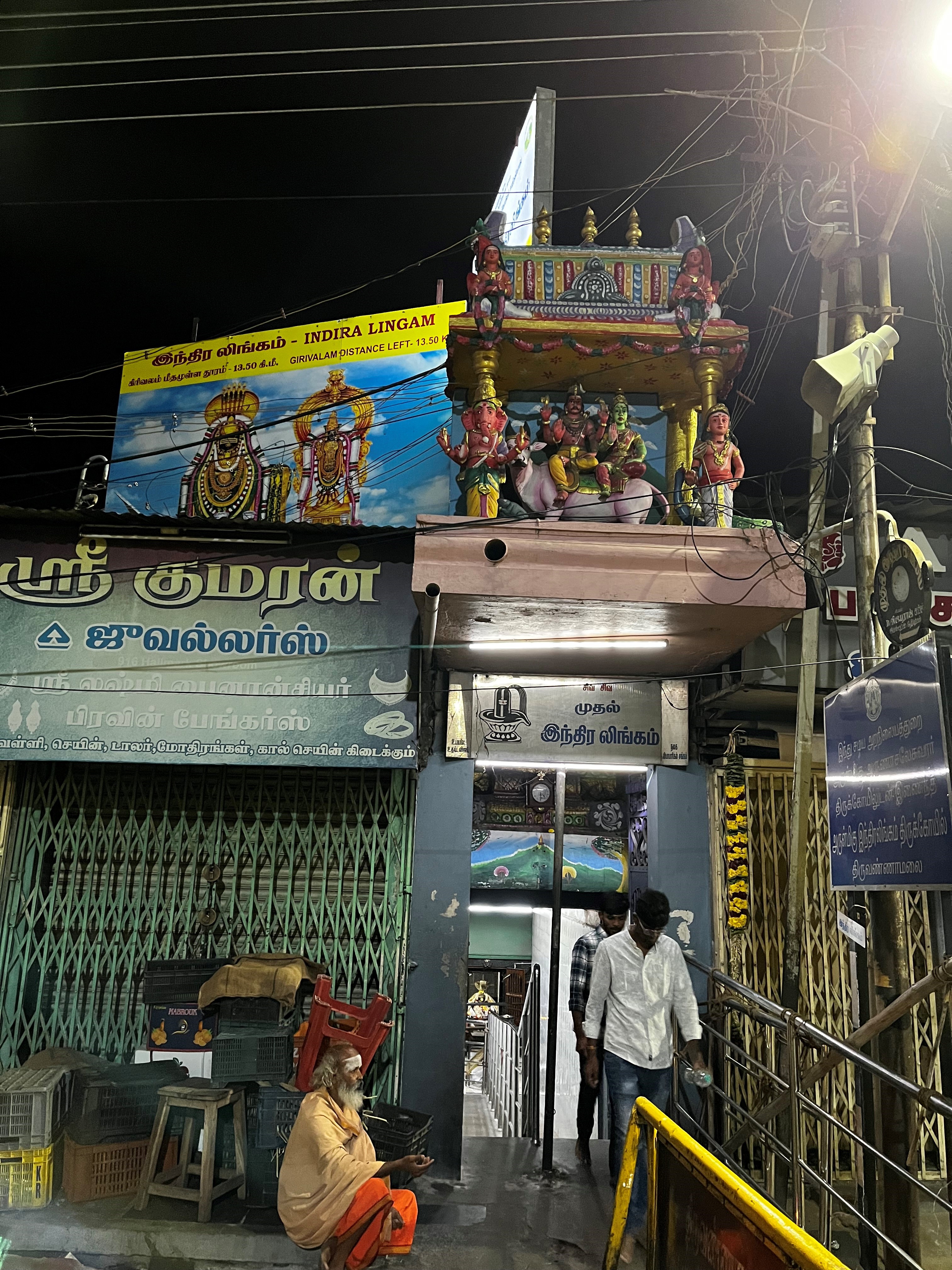
Energized, we walked along the road as it took a bend as it joined another road. Still, we were inside the town only, and we could see more and more people doing the Giri Valam. Most of them walk barefoot, which is said to be ideal. However, it is not compulsory, and we did use footwear for the parikrama, removing them at each of the temples, before worship. We gradually left the town behind us and moved out into the open road. After a fairly long walk, we reached the second lingam viz. Agni Lingam. This is the only lingam that falls on the right side of the Giri Valam route, as you circumambulate the hill, clockwise. One has to walk a few meters off the road inside an alley to the Agni Lingam shrine. The direction it represents is south-east.
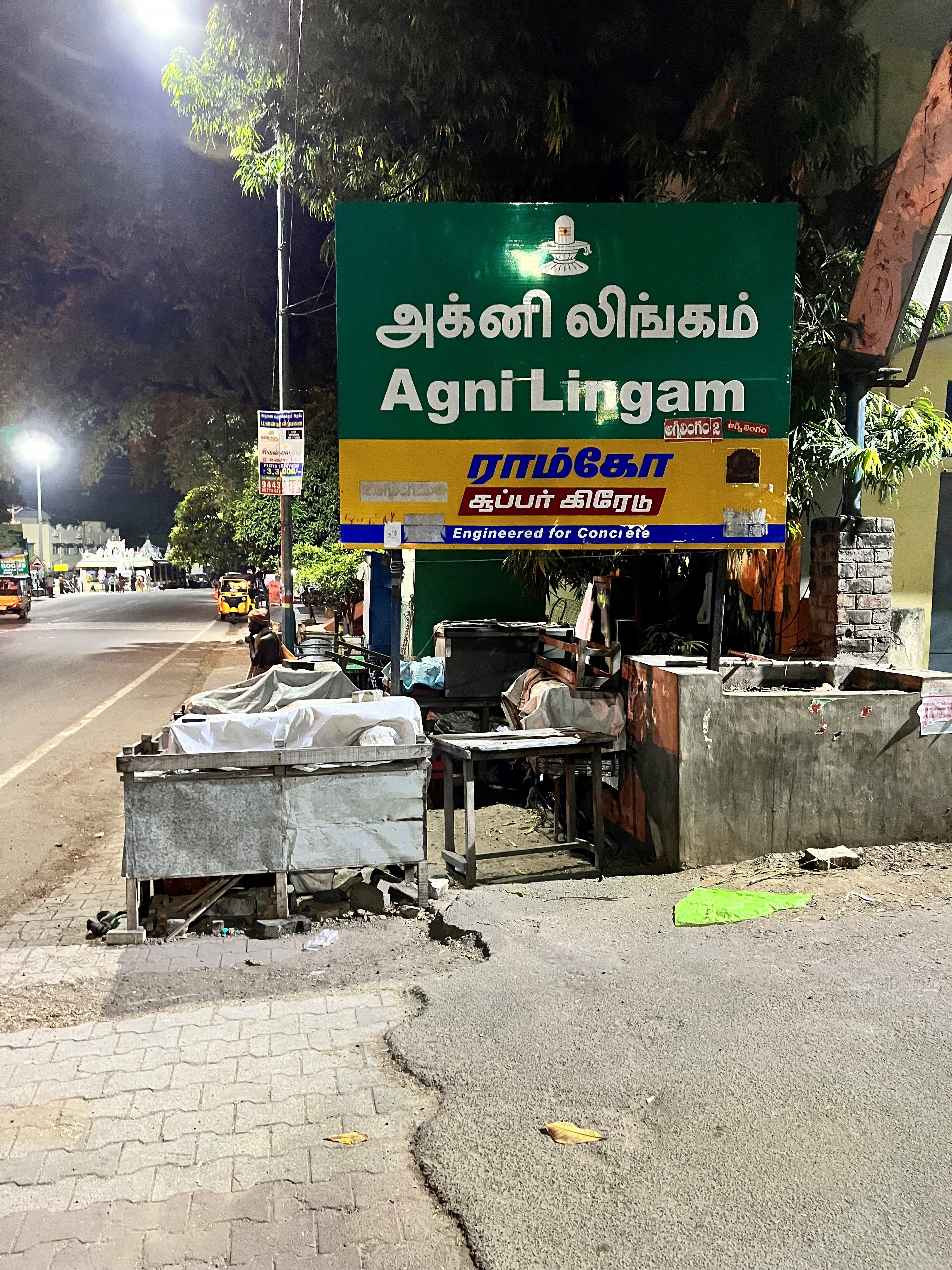
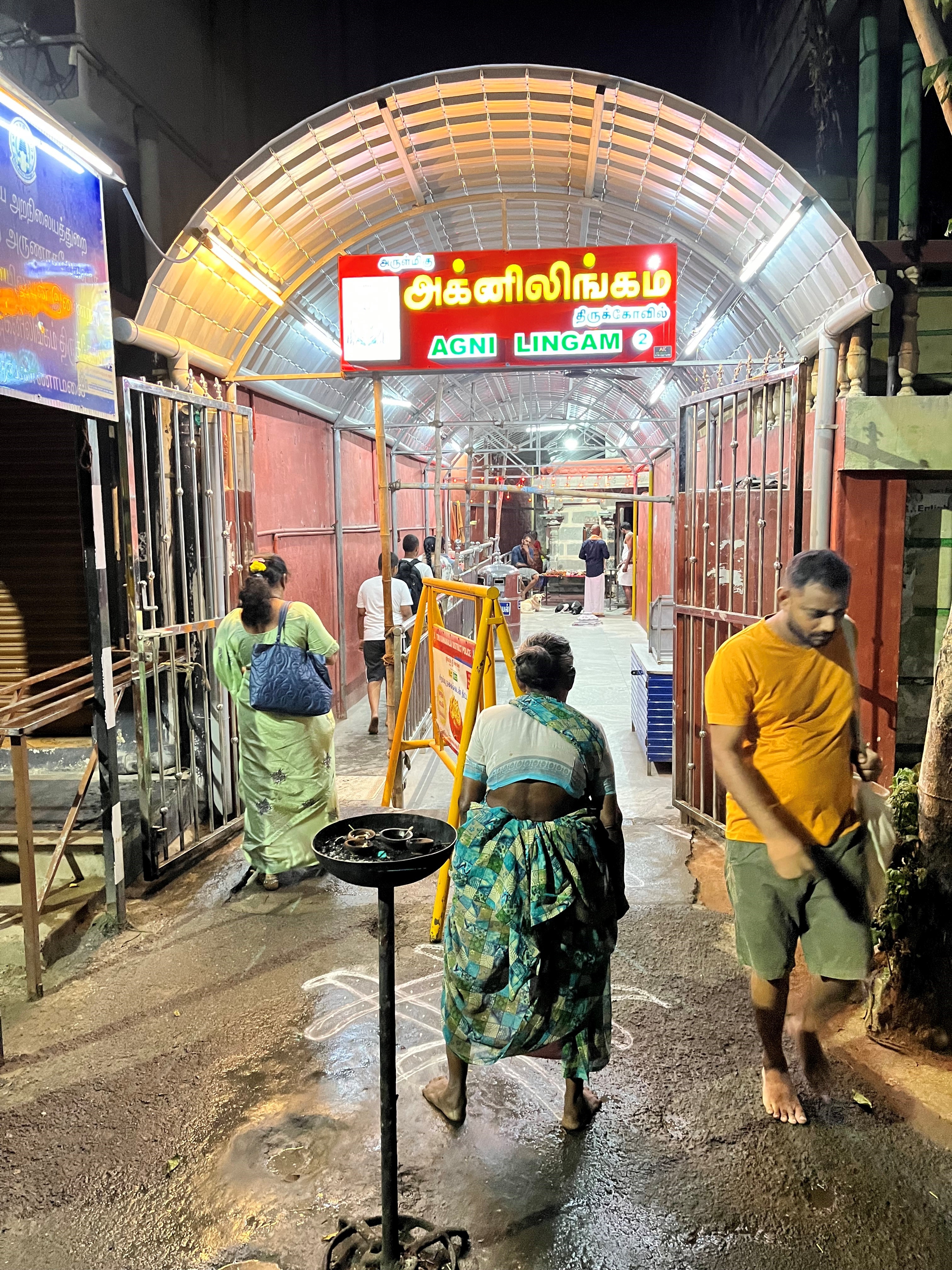
It was still dark, but more people could be seen walking. A very long walk, we thought, we had possibly missed the next lingam.
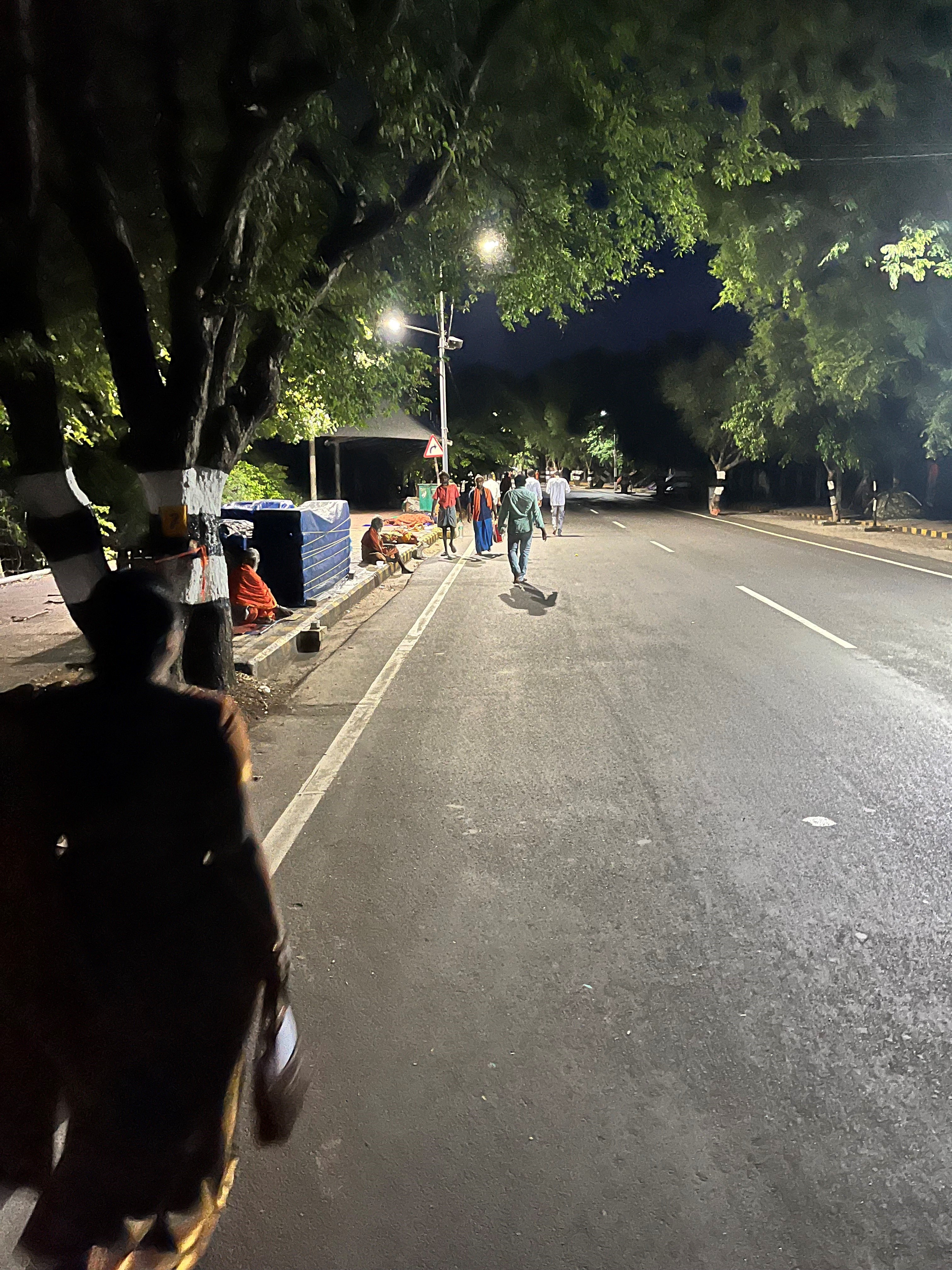
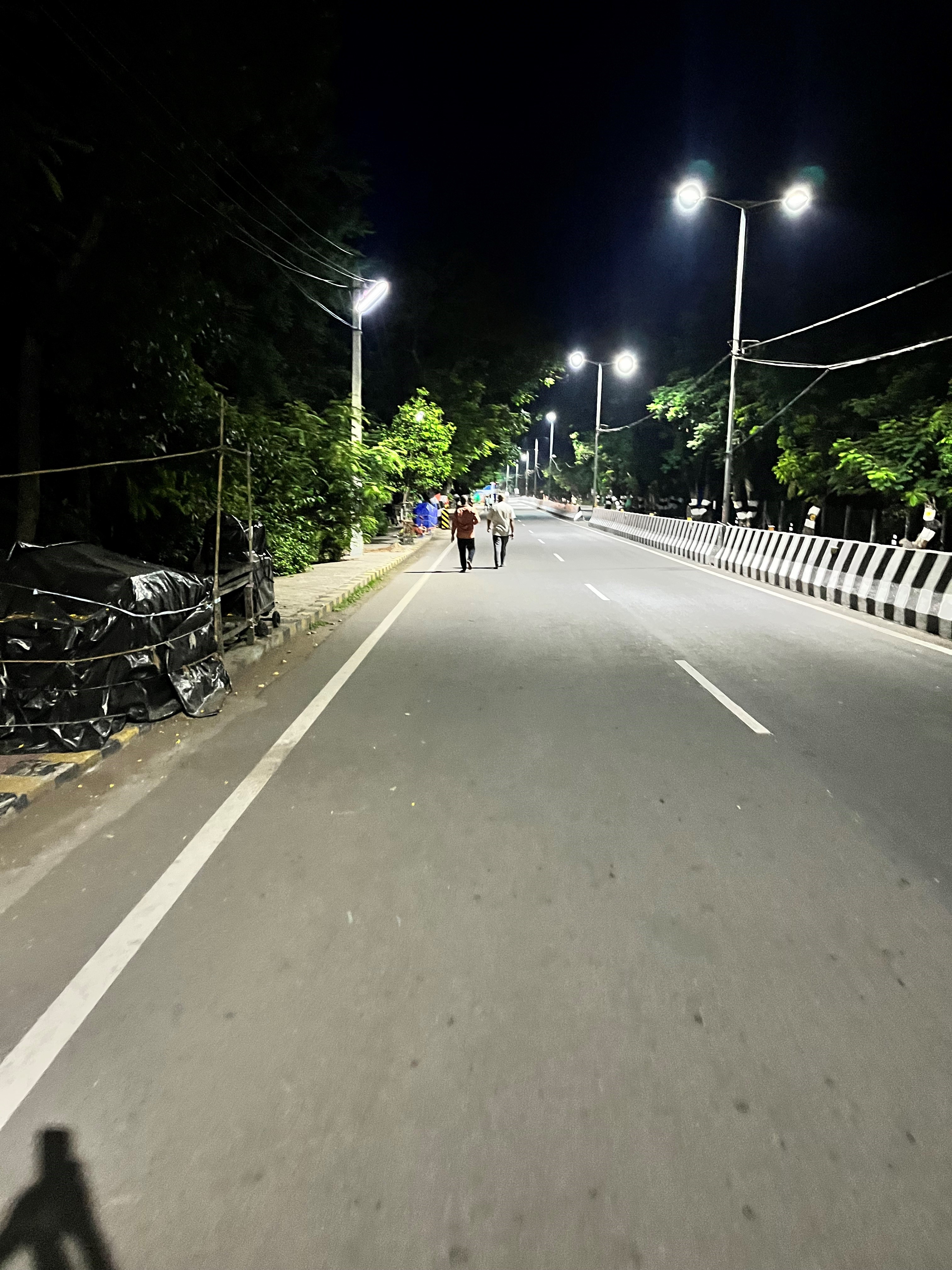
No, we hadn’t. there was the Yama Lingam shrine before us, representing the south direction. This was one of the larger shrines we had seen so far. After a good darshan, we hit the trail again.
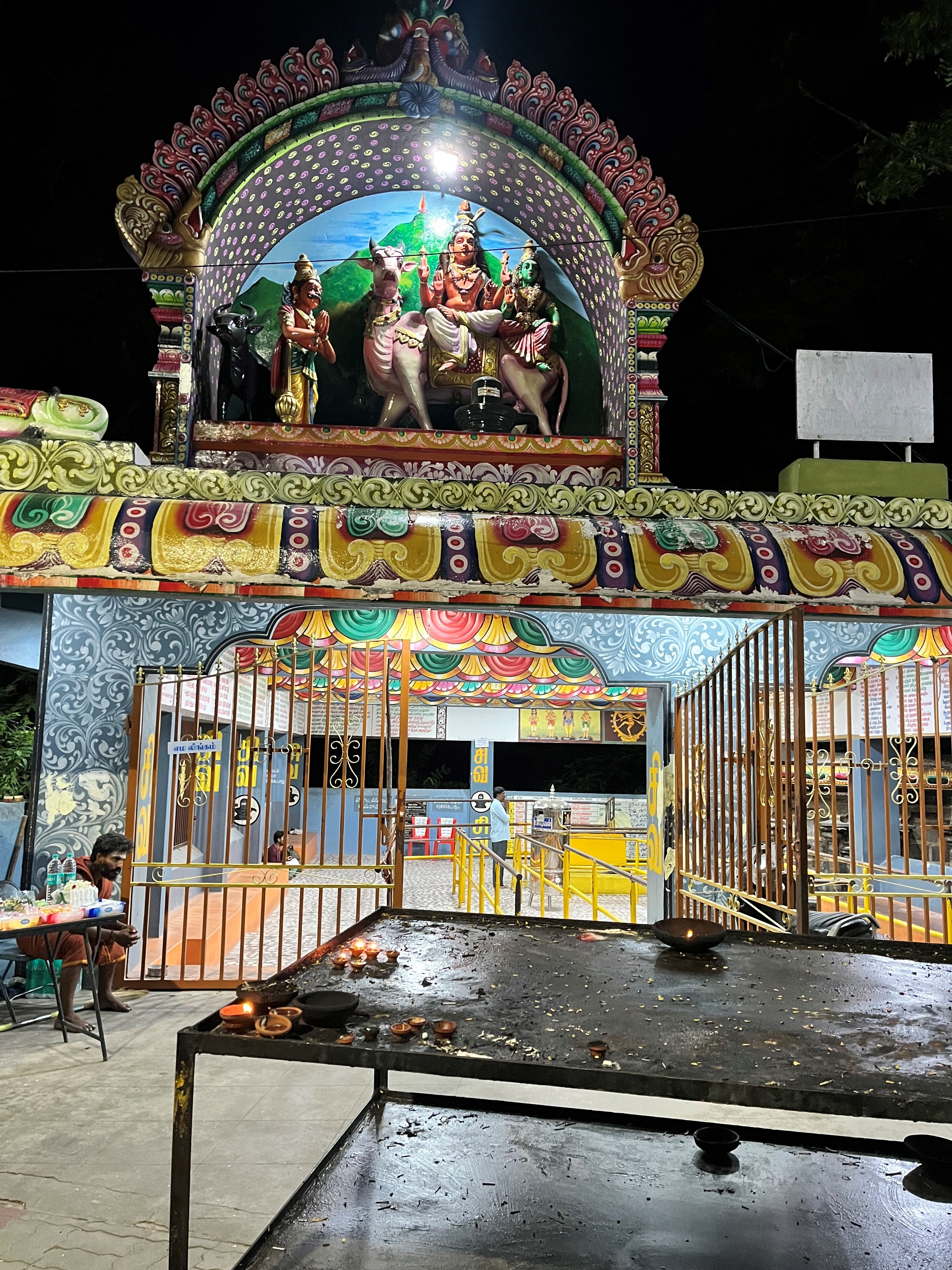
A further two-kilometer walk, and we were at the Nirudhi Lingam (south-west being the cardinal direction). Nirudhi was the king of the giants.
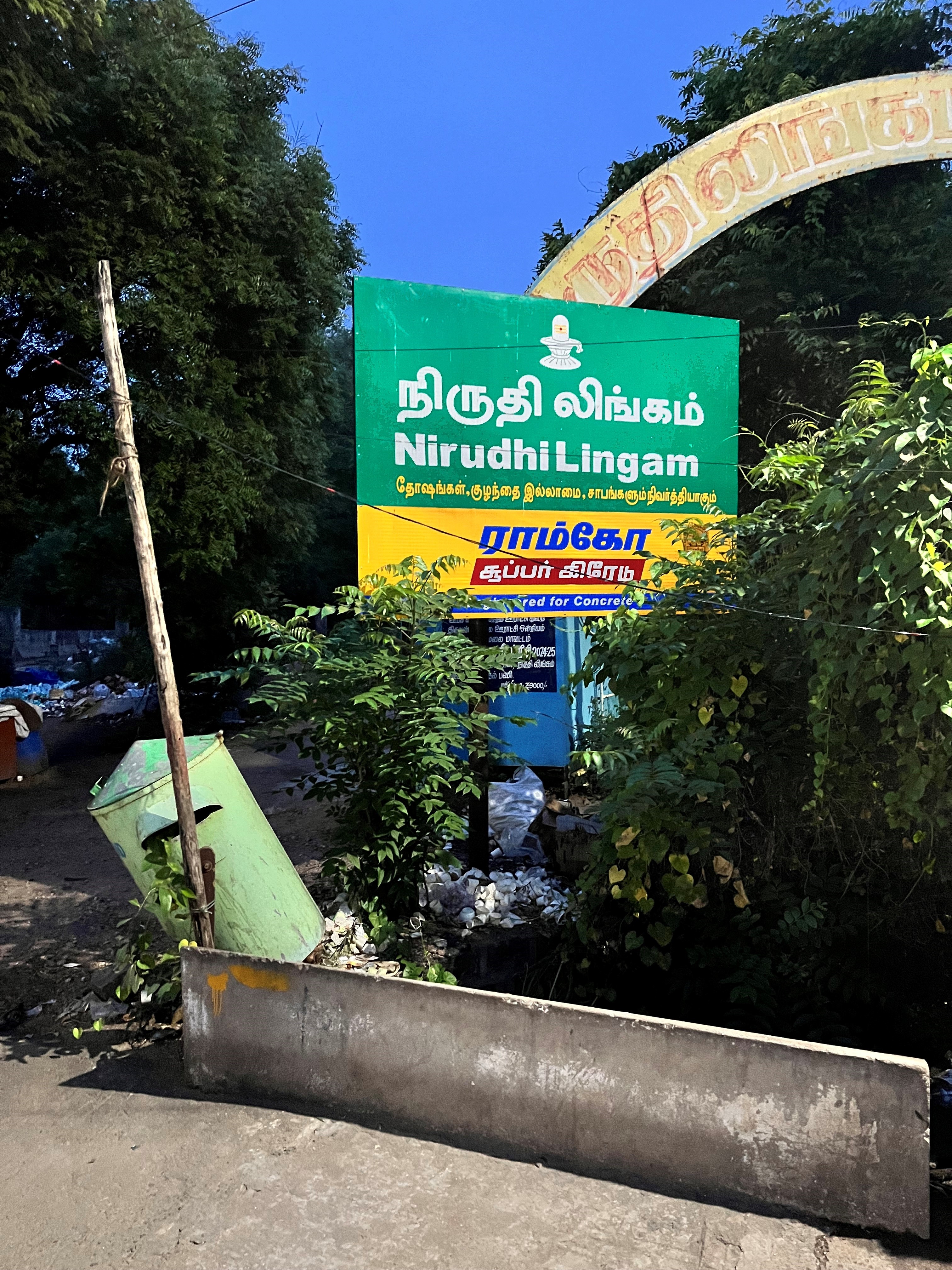
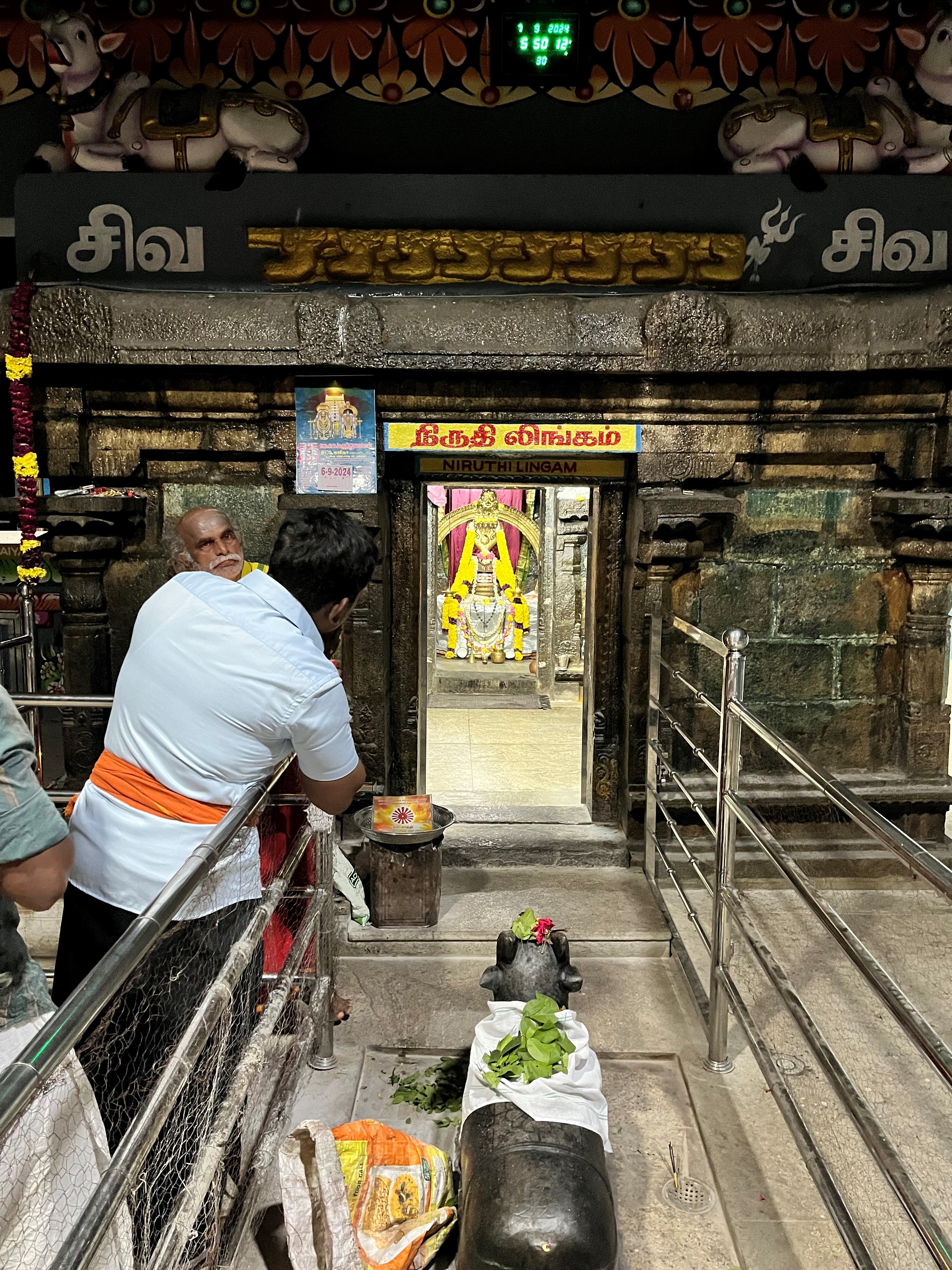
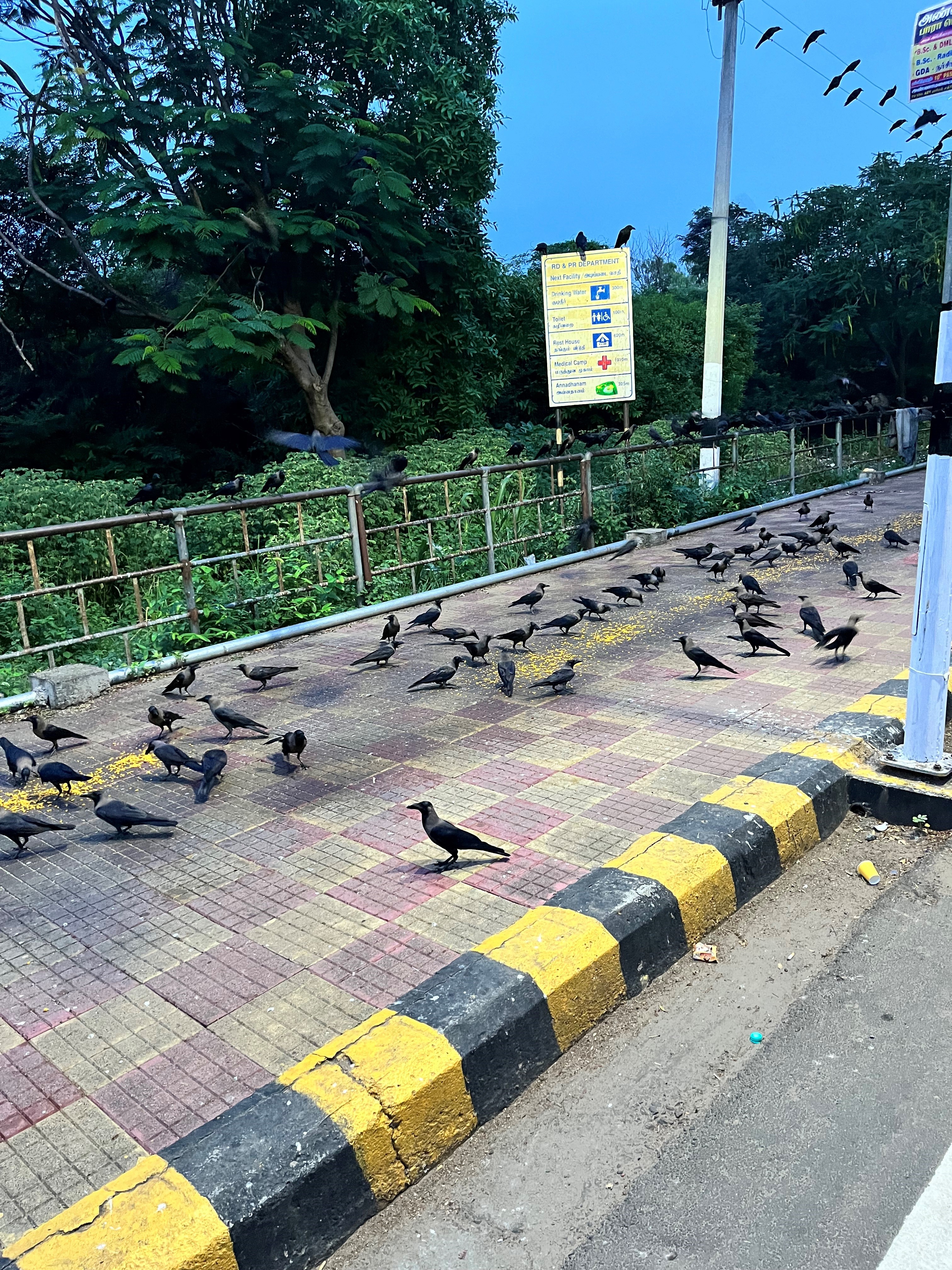
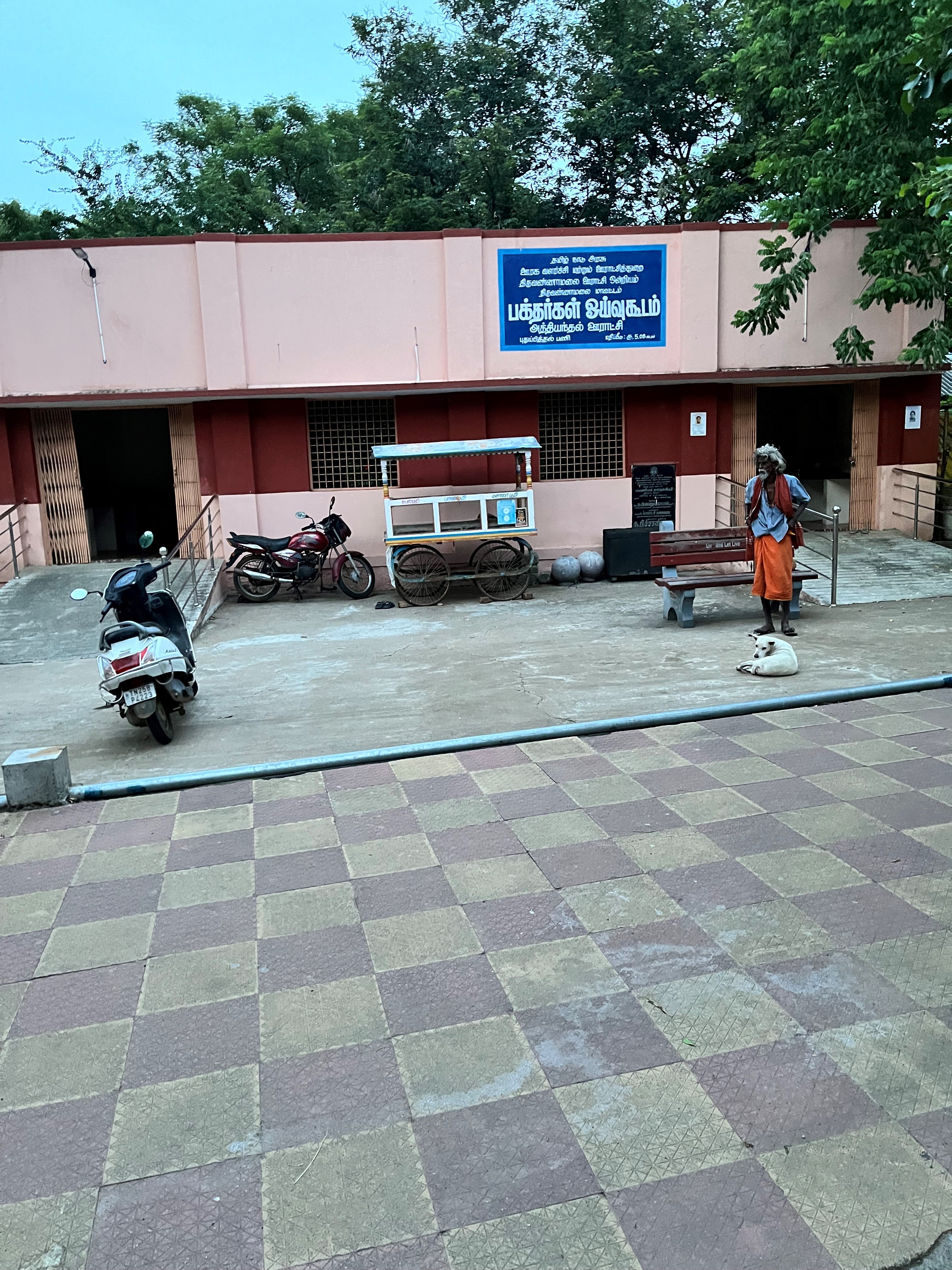
Daylight was breaking and the loudspeakers attached to the lamp posts, started the chants of ‘Om Nama Shivaya’, that was truly invigorating, as we continued our walk and passed the, now defunct Nithyananda Ashram to our right.
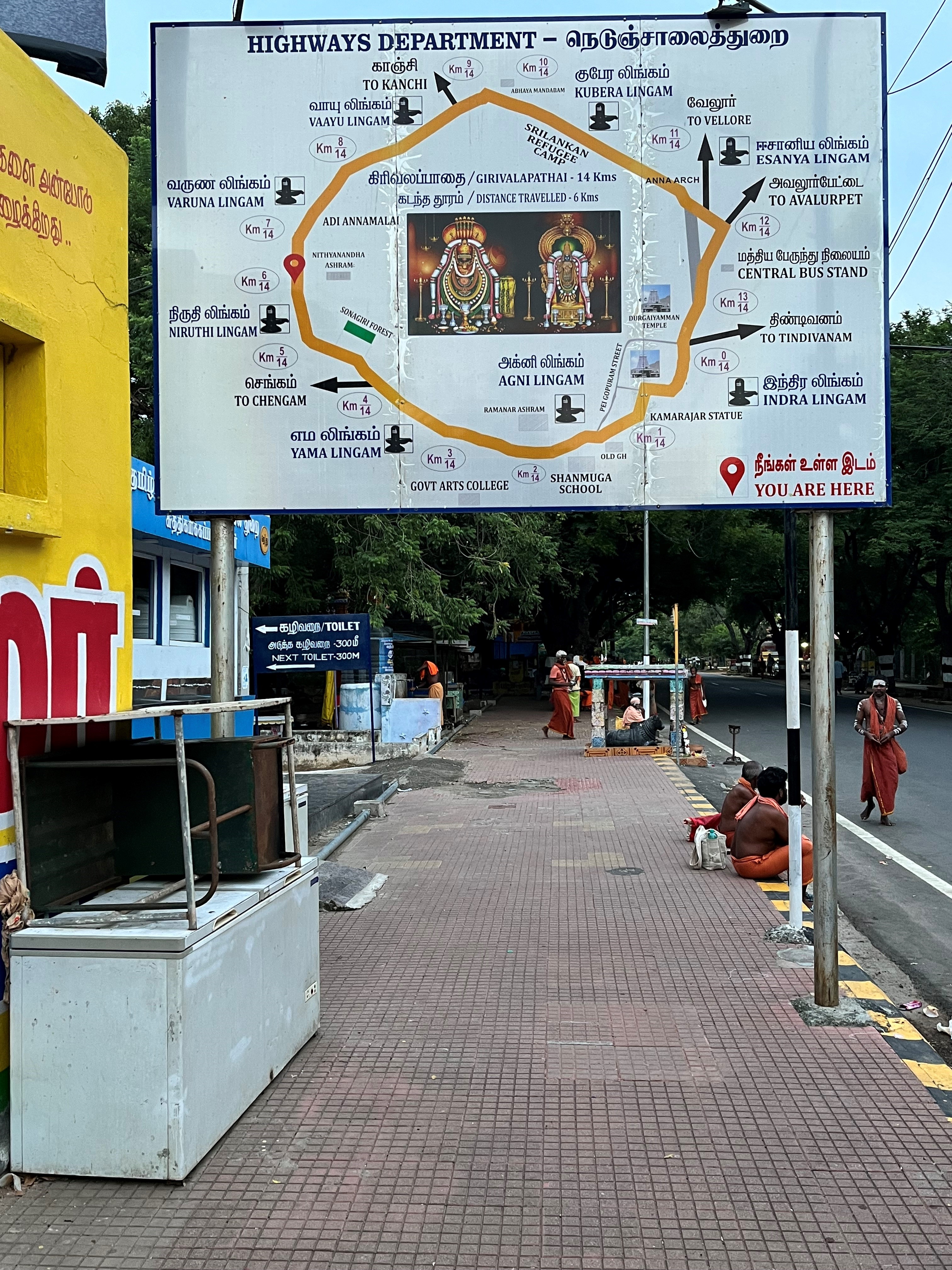
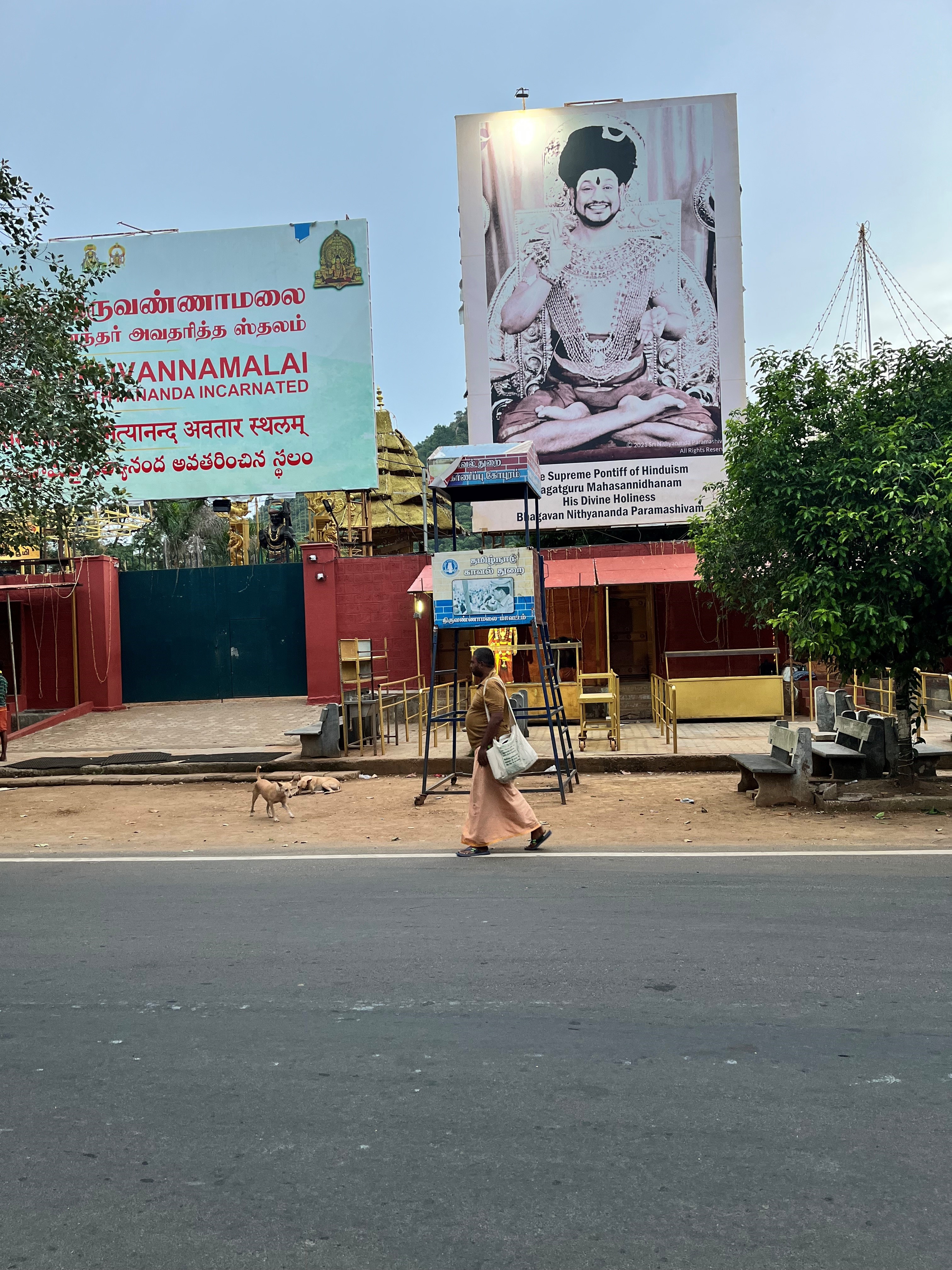
It is said, while doing the Giri Valam, one must repeatedly keep looking at the Arunachala hill and chant ‘ Arunachala, Arunachala’. So far, we had not been able to see the hill at all on our route. Next temple on our way was the Thiru Ner Annamalai temple, with ‘Ner’ meaning straight. It is from this point, that the Arunachala hill can be seen by the pilgrims, and as one walks along, the different views of Arunachala hill, are sights to behold. It is believed that Unnammalai Amman, consort of Annamalayar wanted to have His darshan, but could not do so. As She was performing the Giri Valam, the Lord appeared before her, at this point. A good darshan at this fairly big temple, as we gazed at Arunachala hill. The various facets of Arunachala hill from different points on the Giri Valam path can be seen in the photographs below.
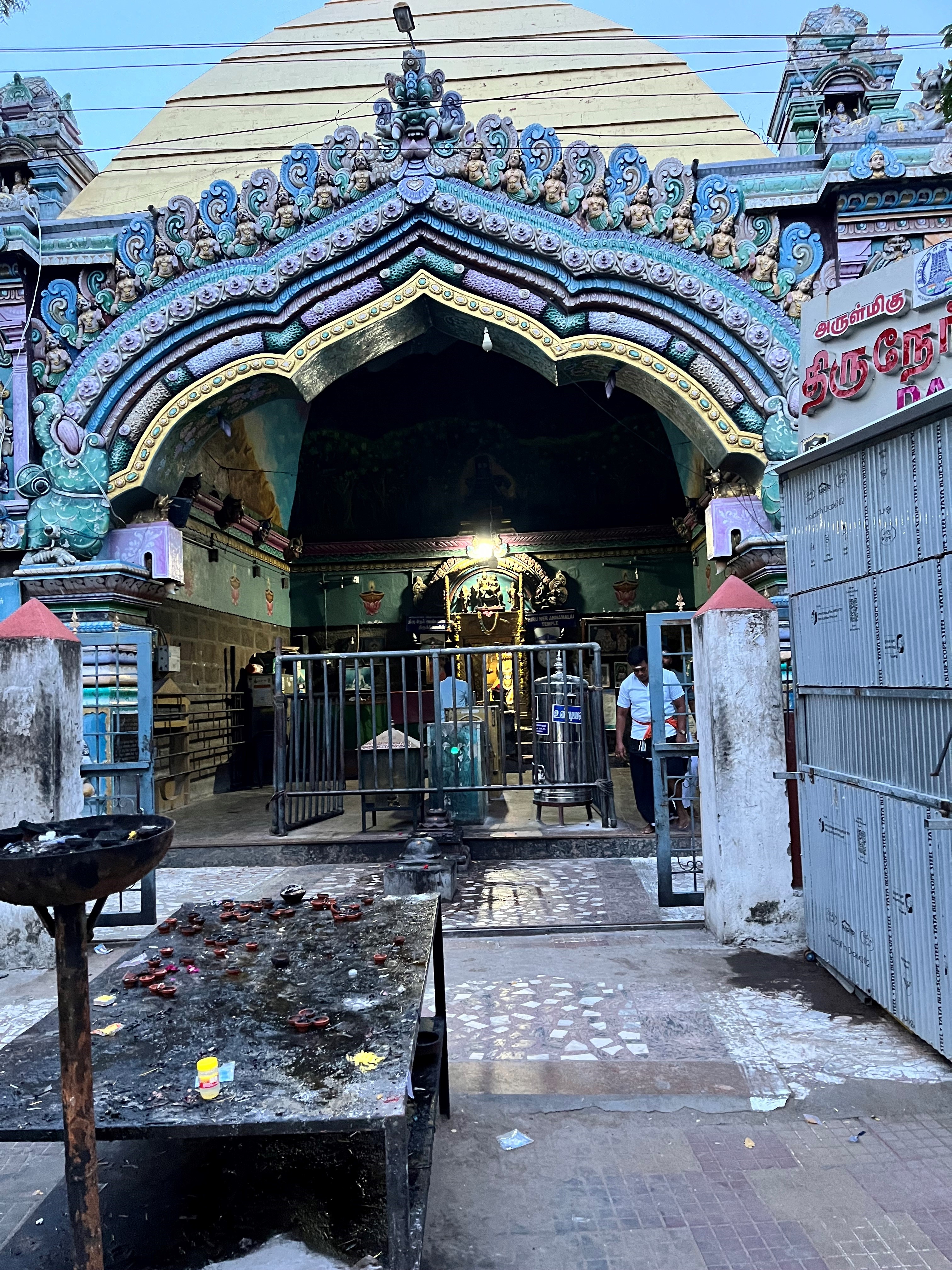
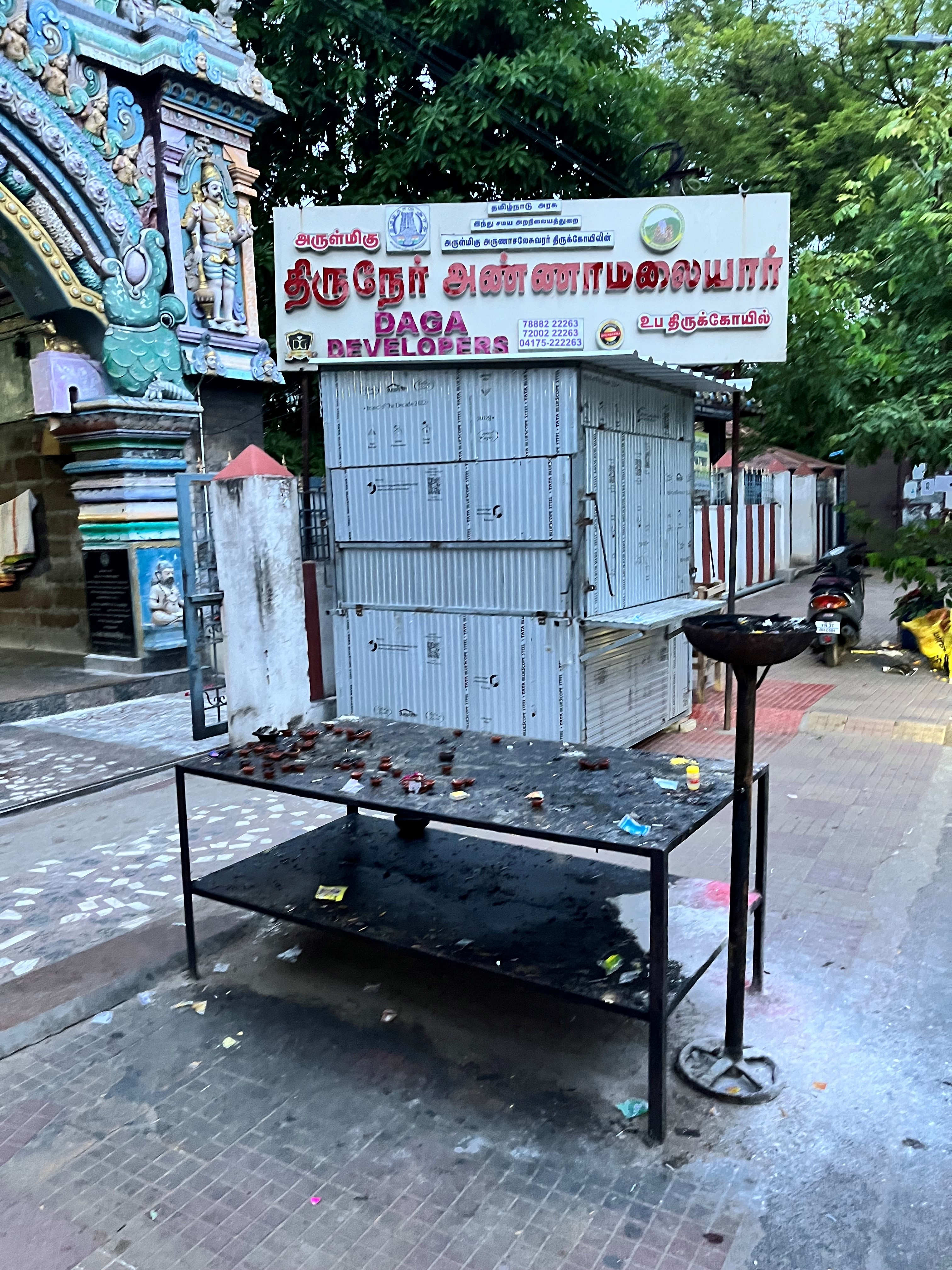
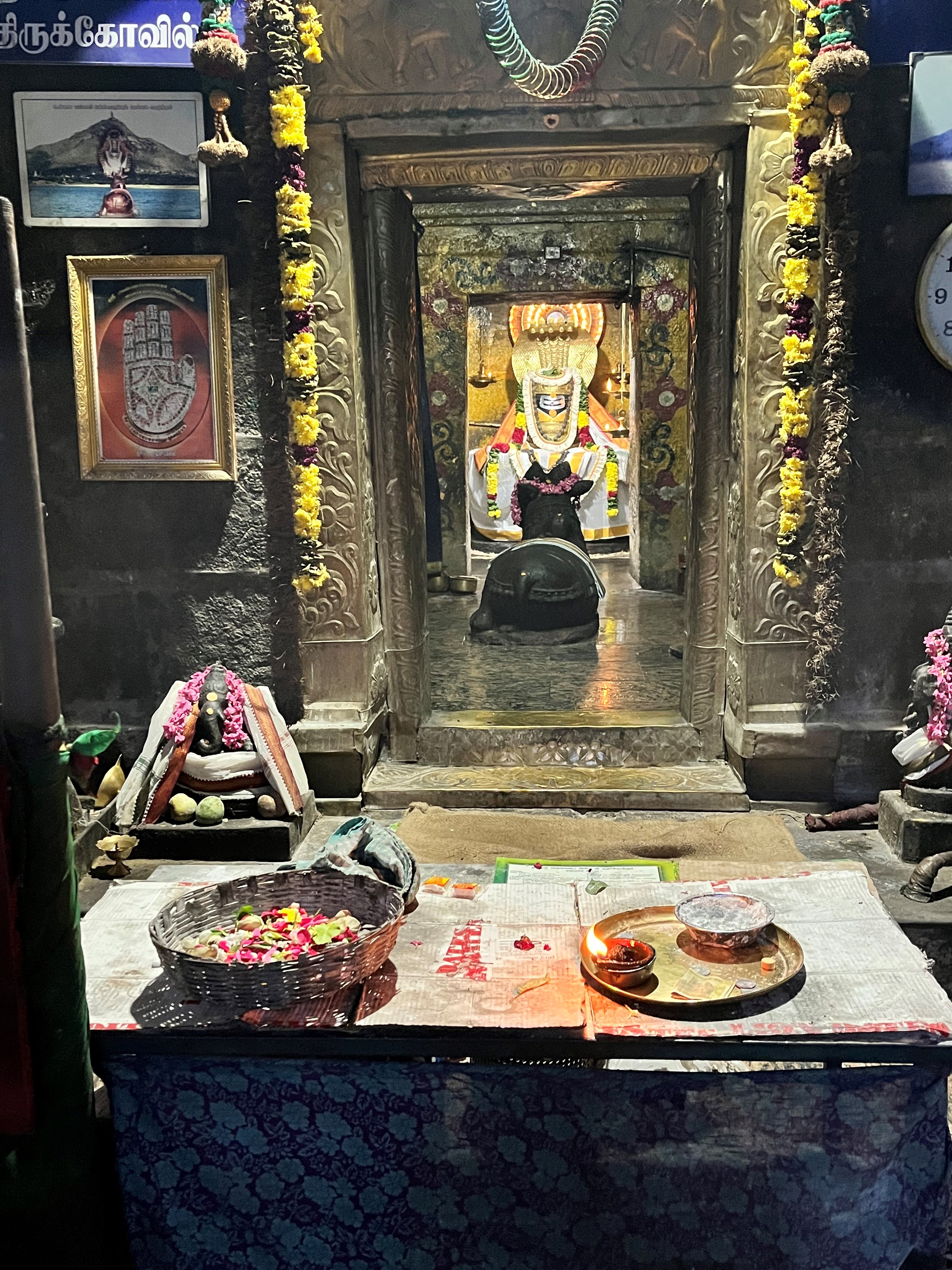
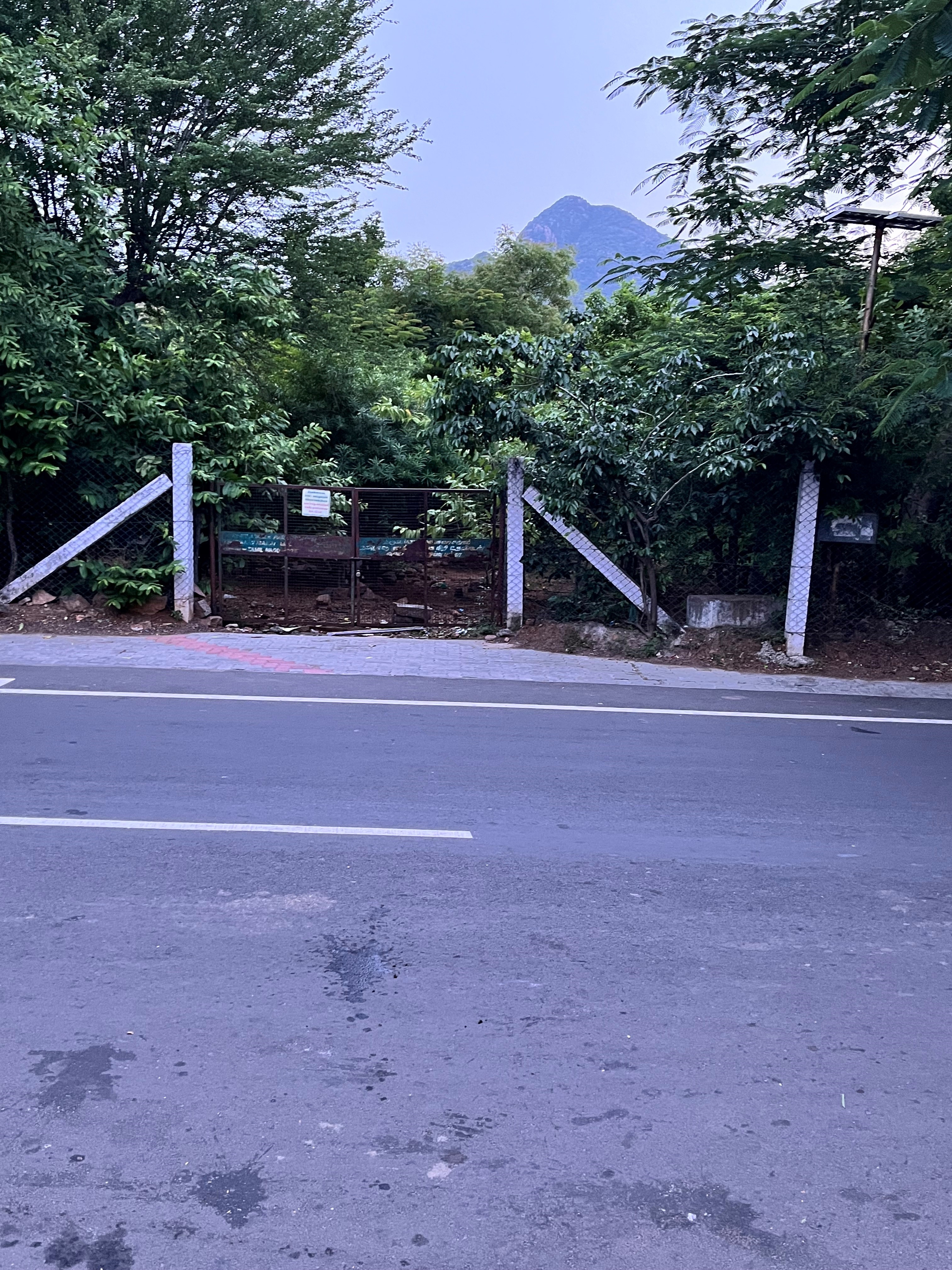
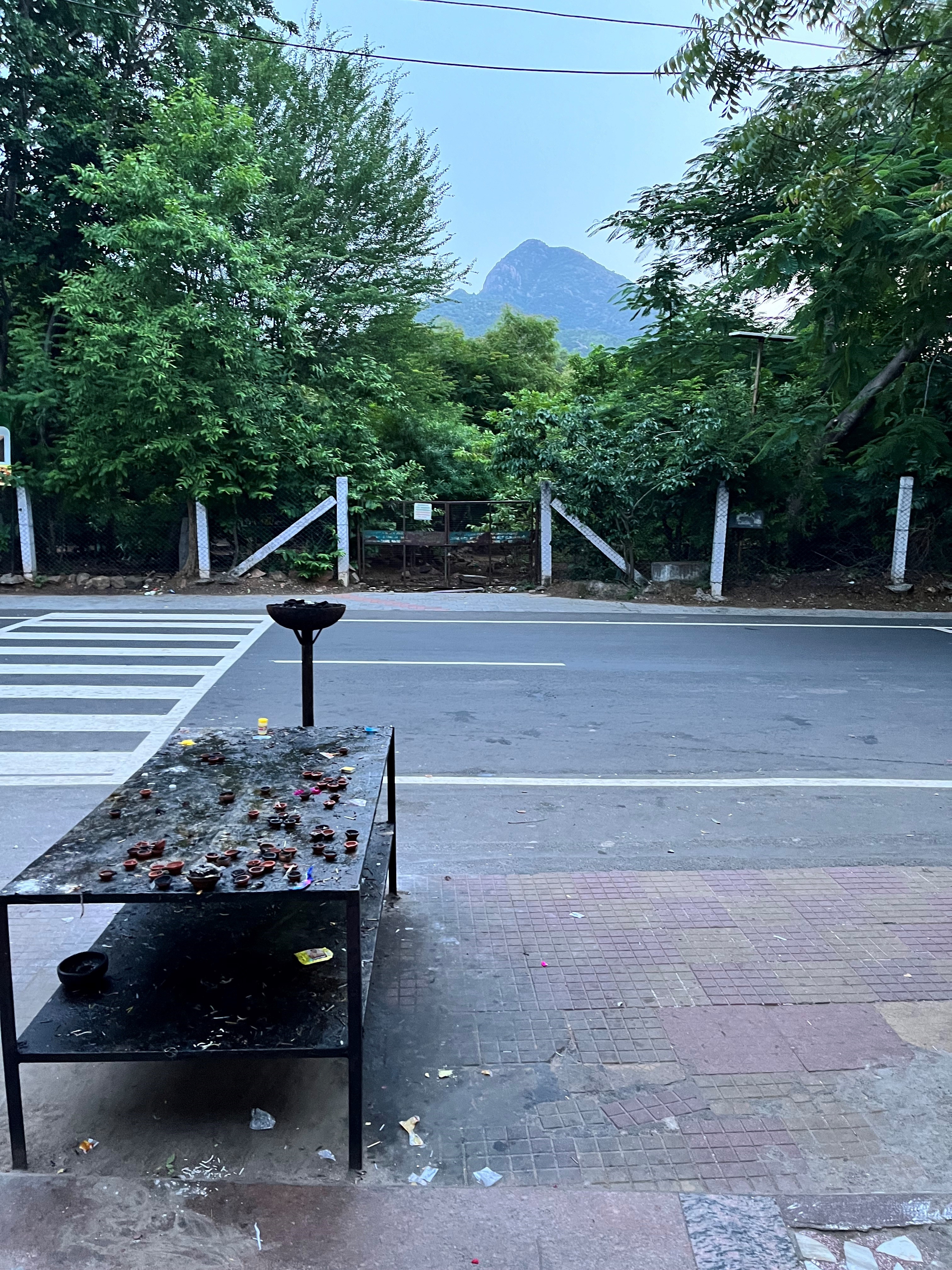
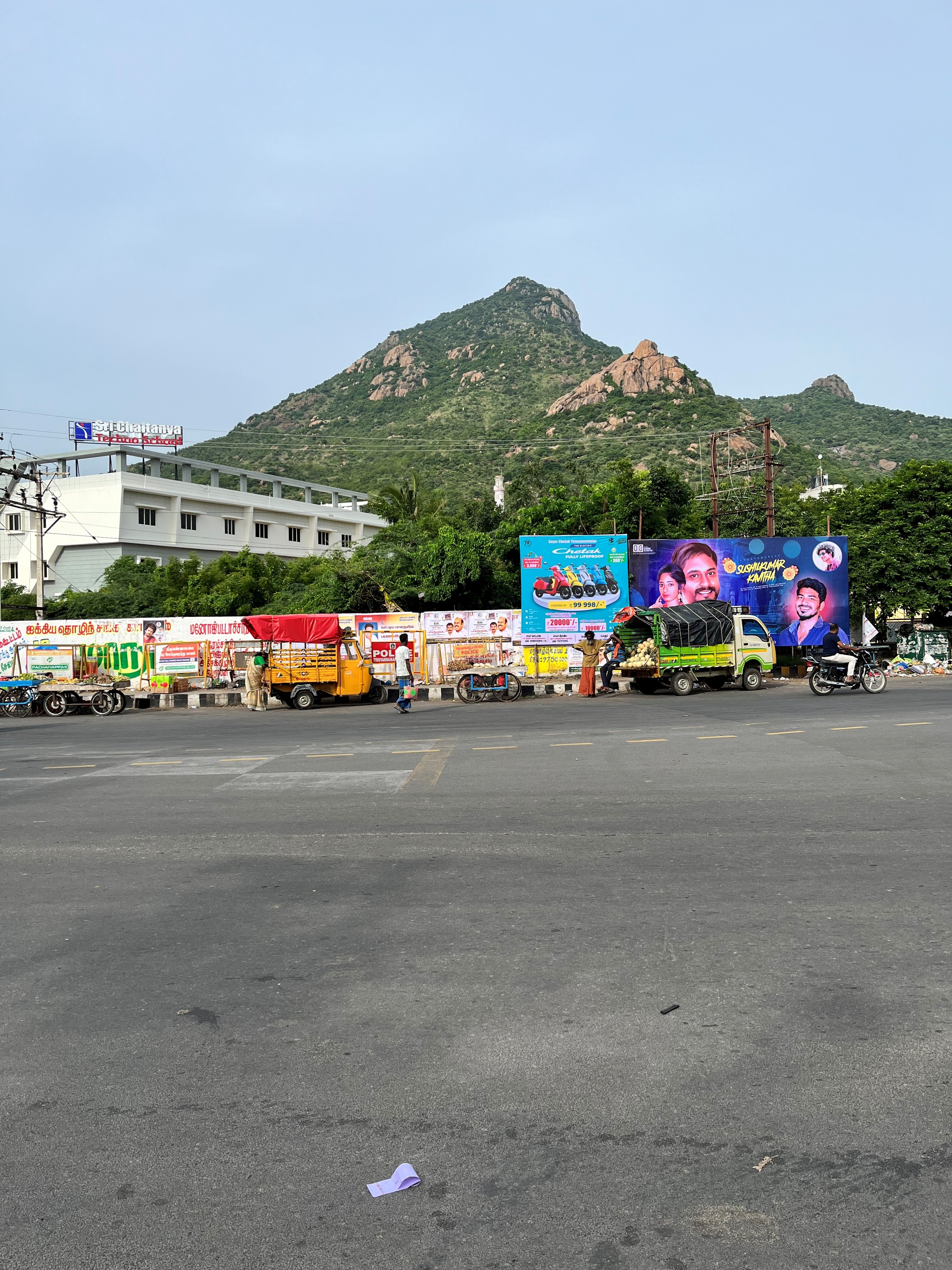
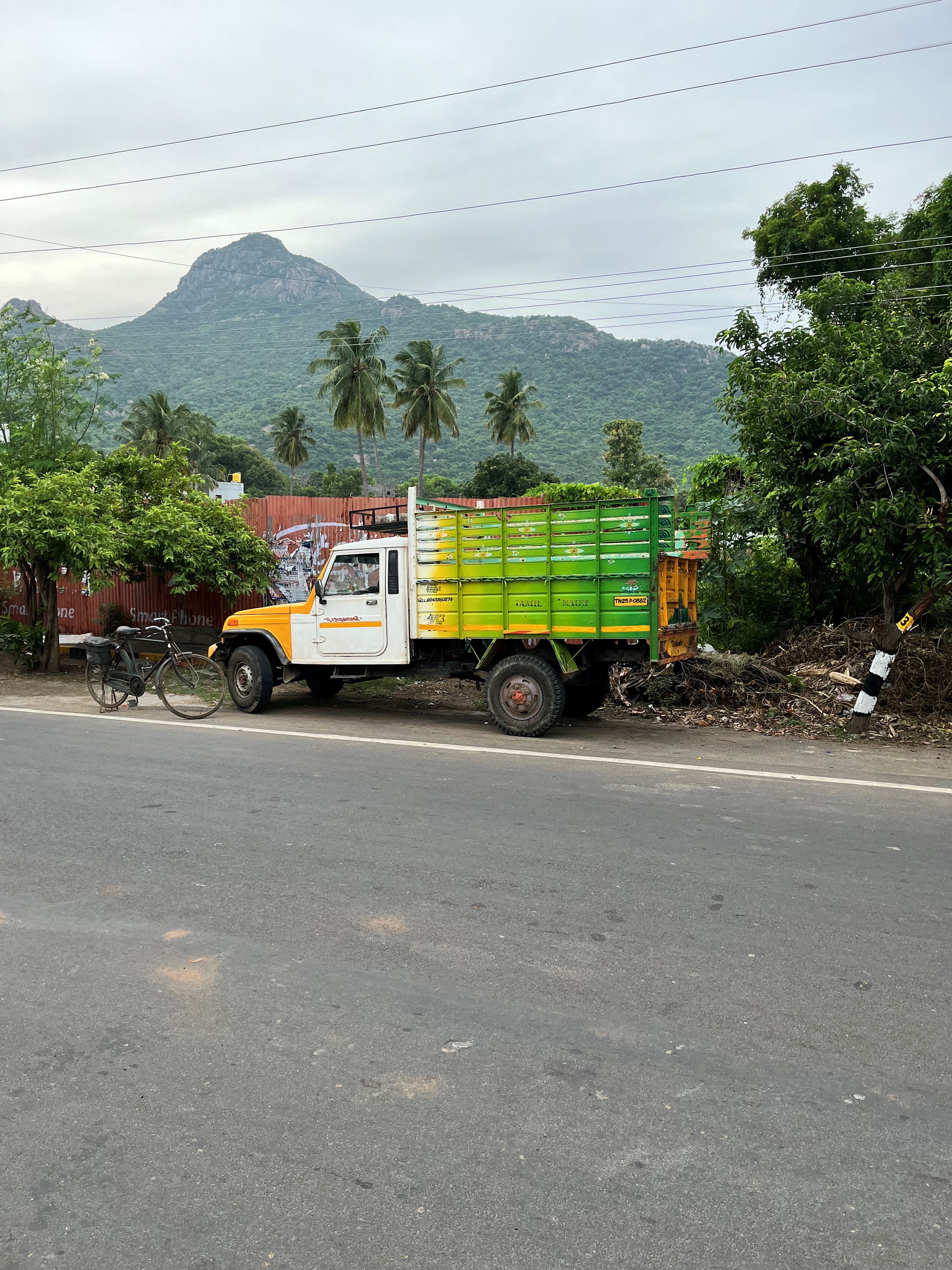
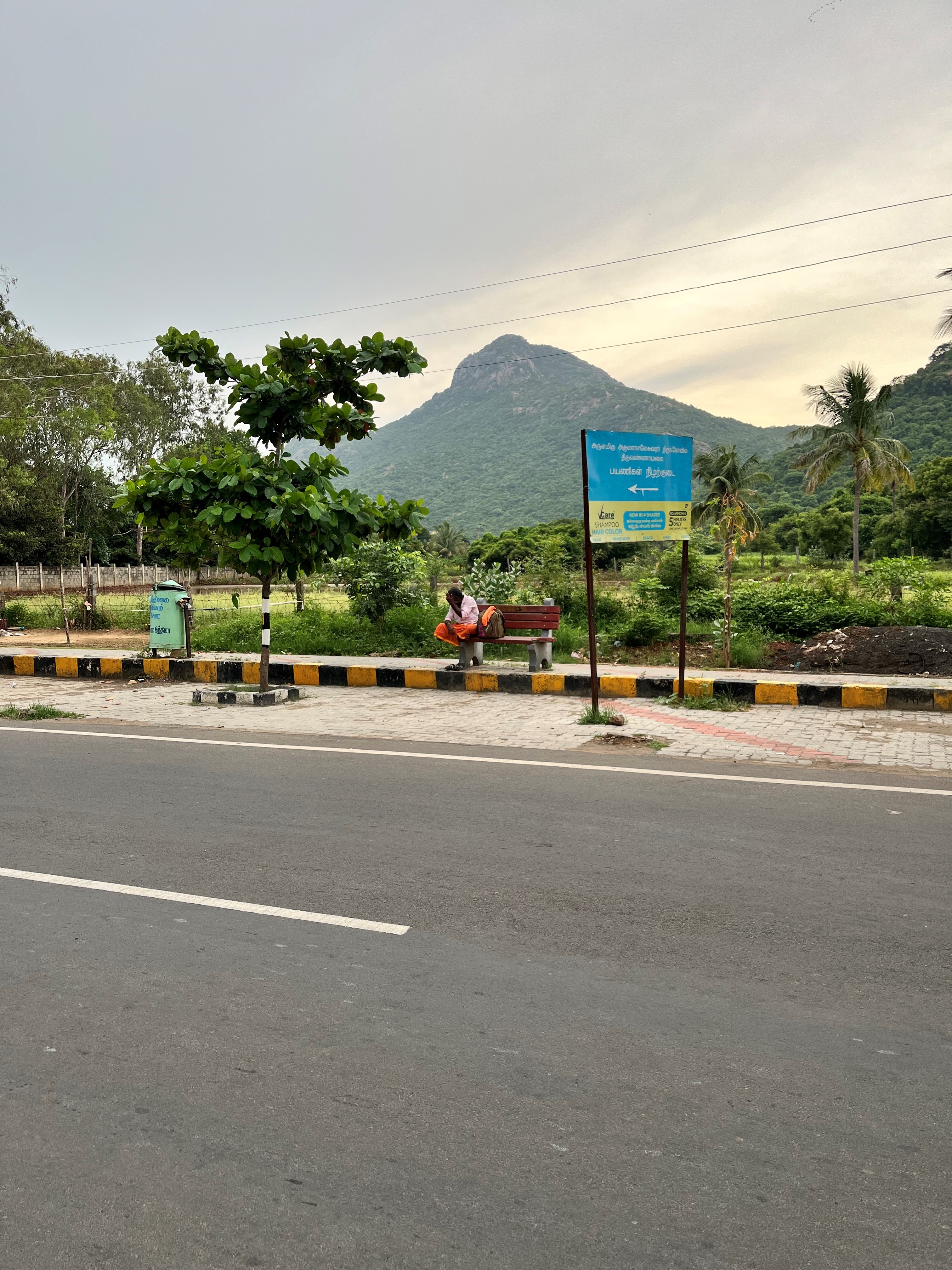
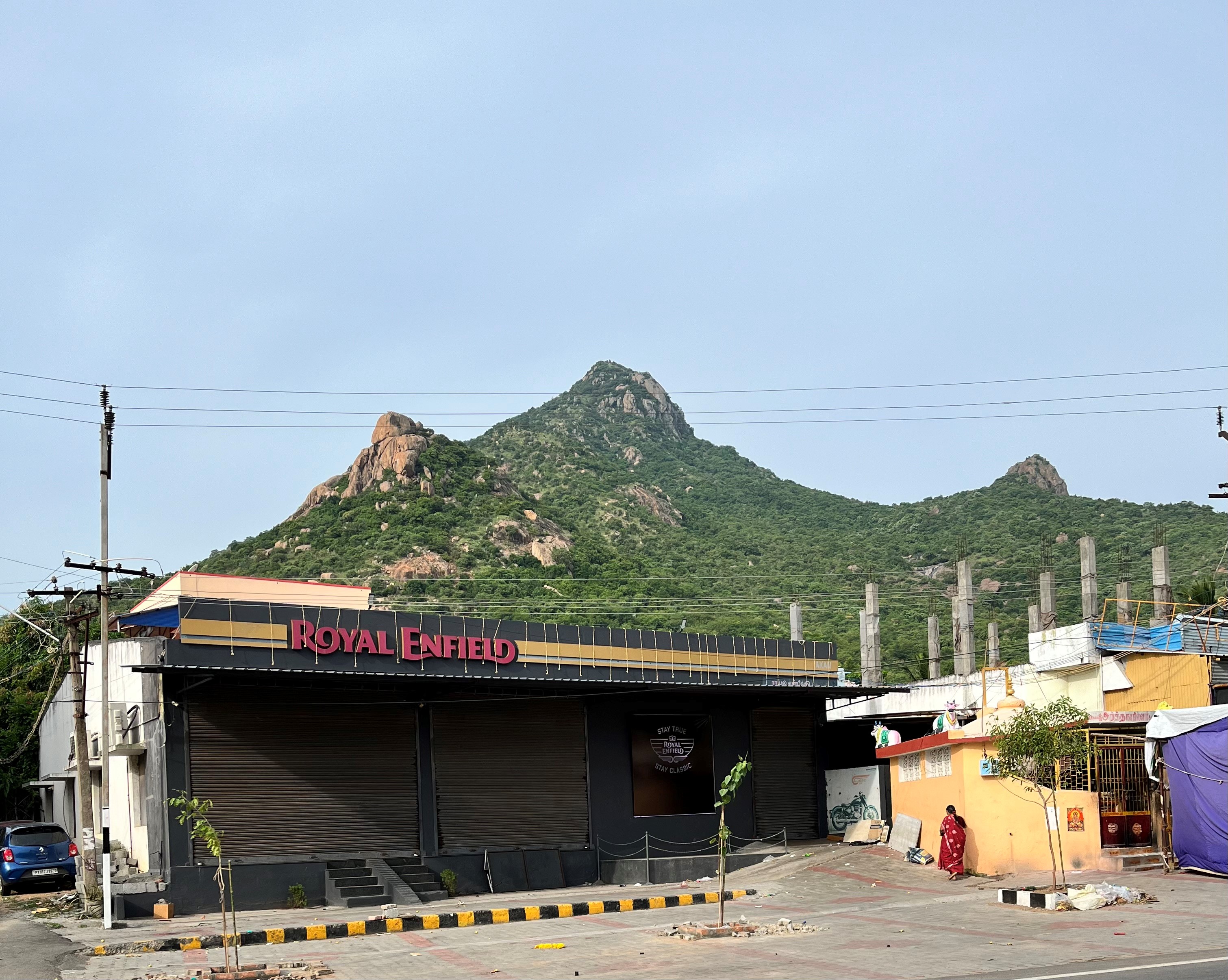
Continuing the Giri Valam after a cup of hot tea, we were at the Surya Lingam shrine. Not one of the Ashta Lingam, but one among the ten lingams on the route.
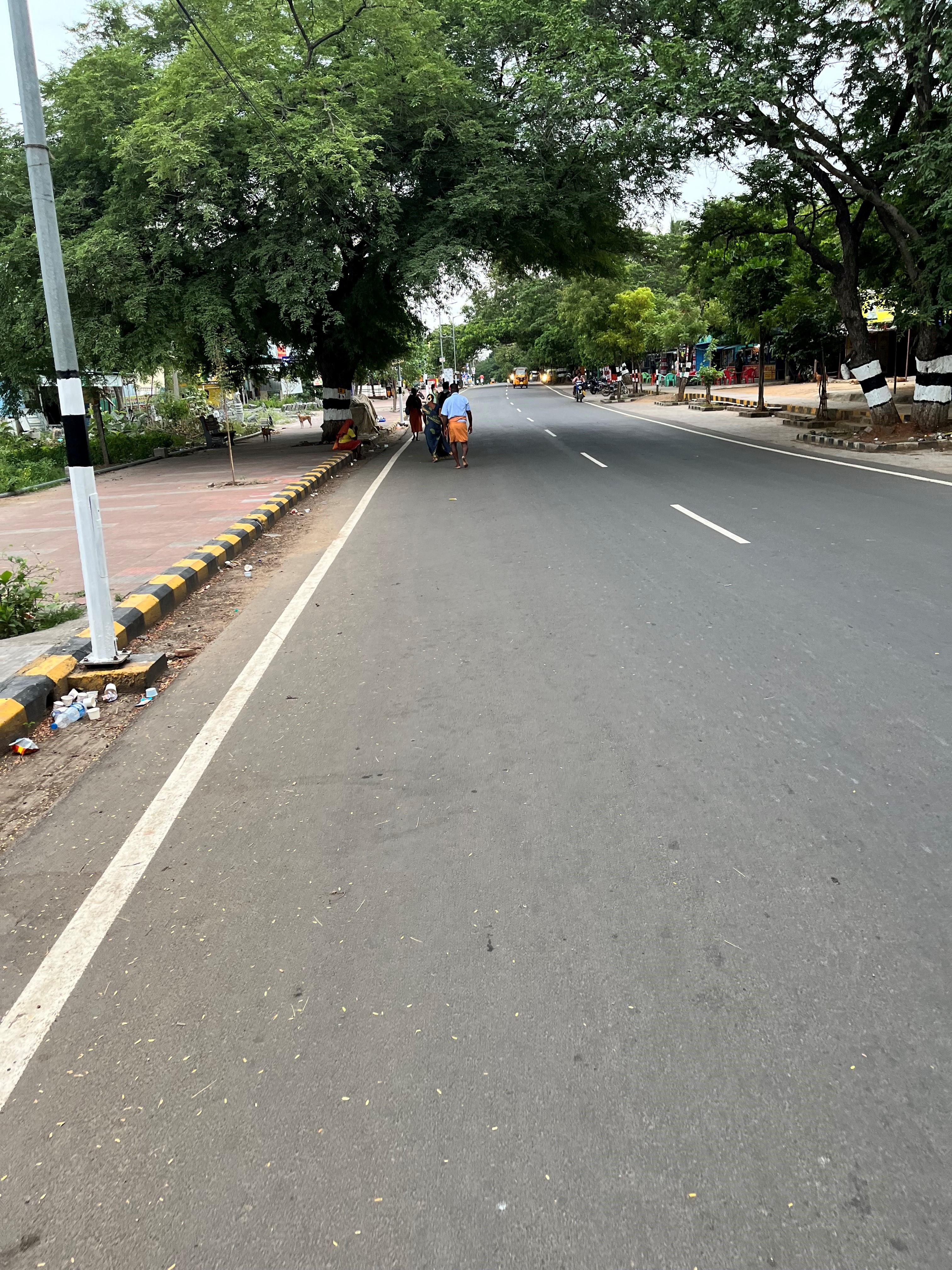
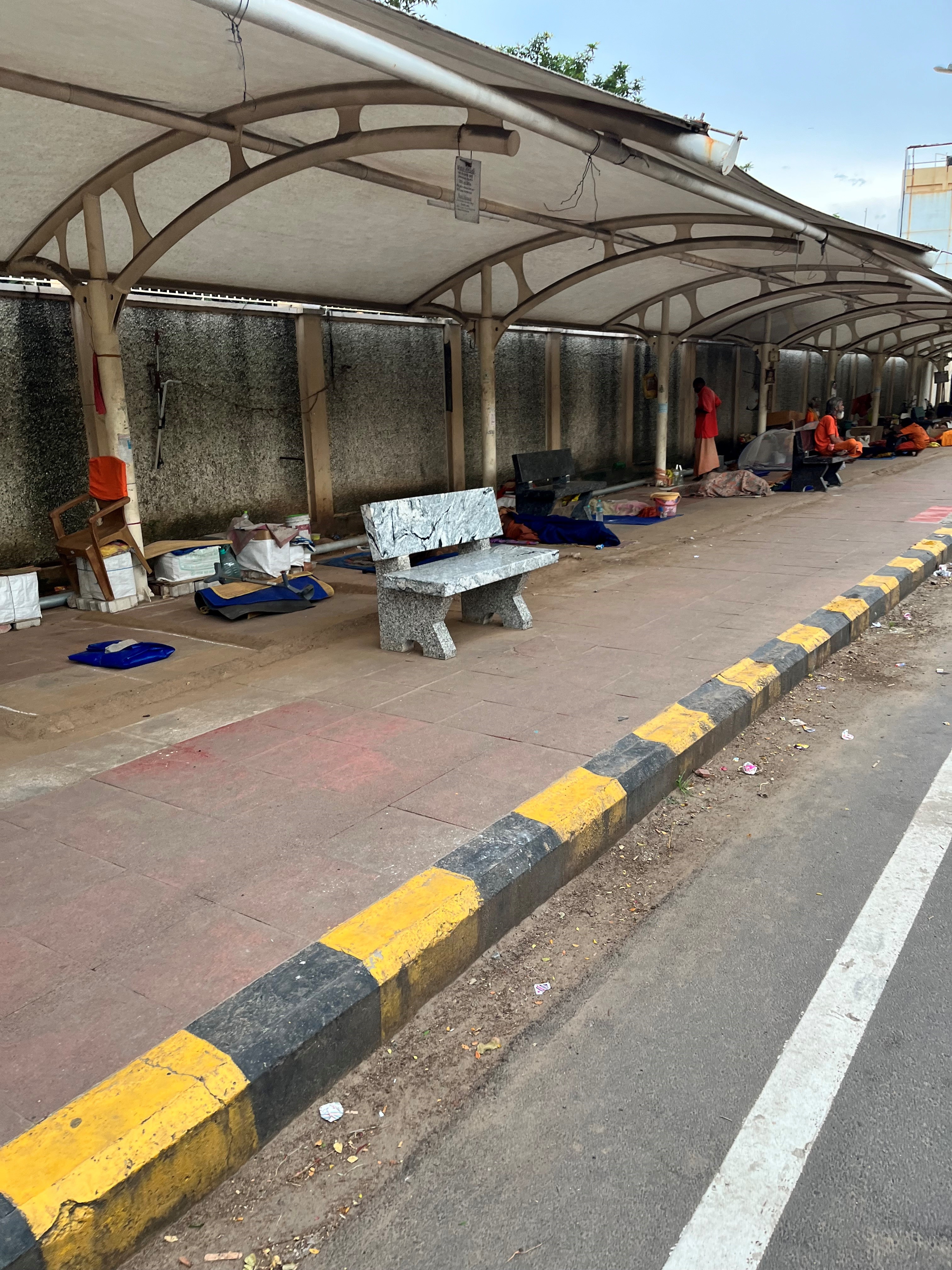
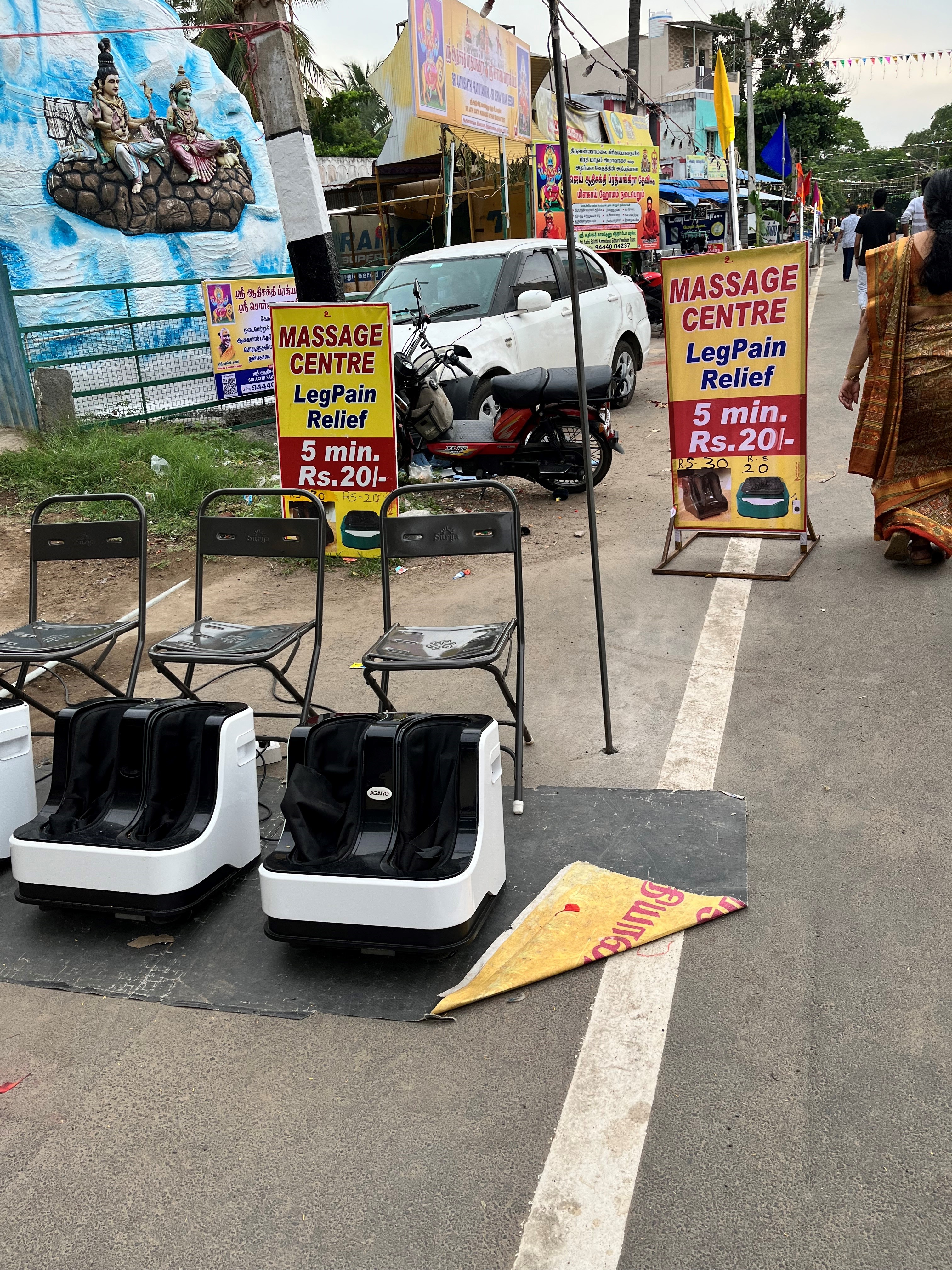
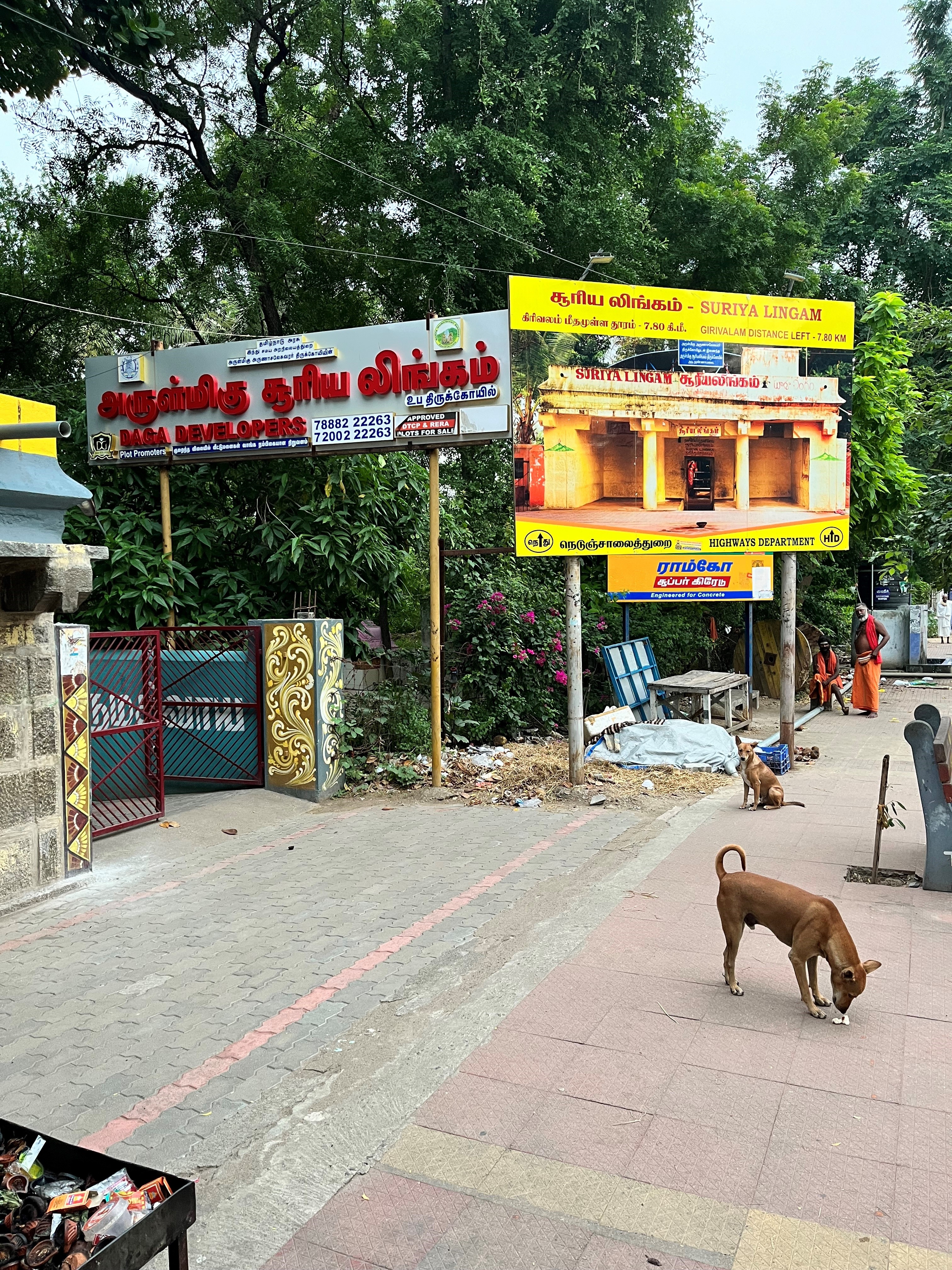

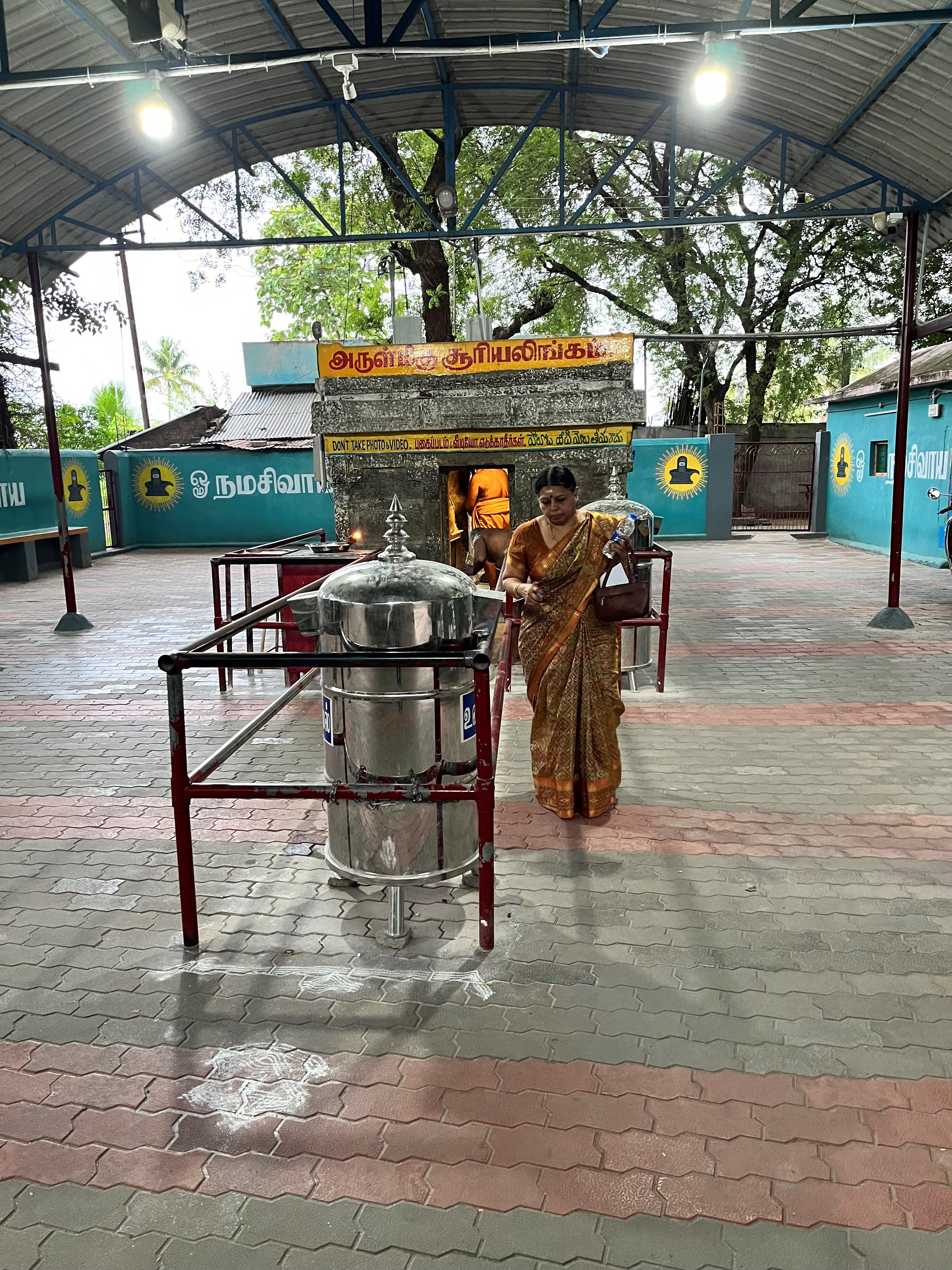
Varuna Lingam, representing the west was our next halt. A quick darshan, and then a few hundred meters later, we crossed the road to walk into a small village (around a kilometer) that houses the Adi Annamalayar temple, said to be even older than the Tiruvannamalai Annamalayar temple. To our disappointment, the temple was not open for darshan at 6.45 AM. Did a quick namaskar from outside and walked back to the Giri Valam path.
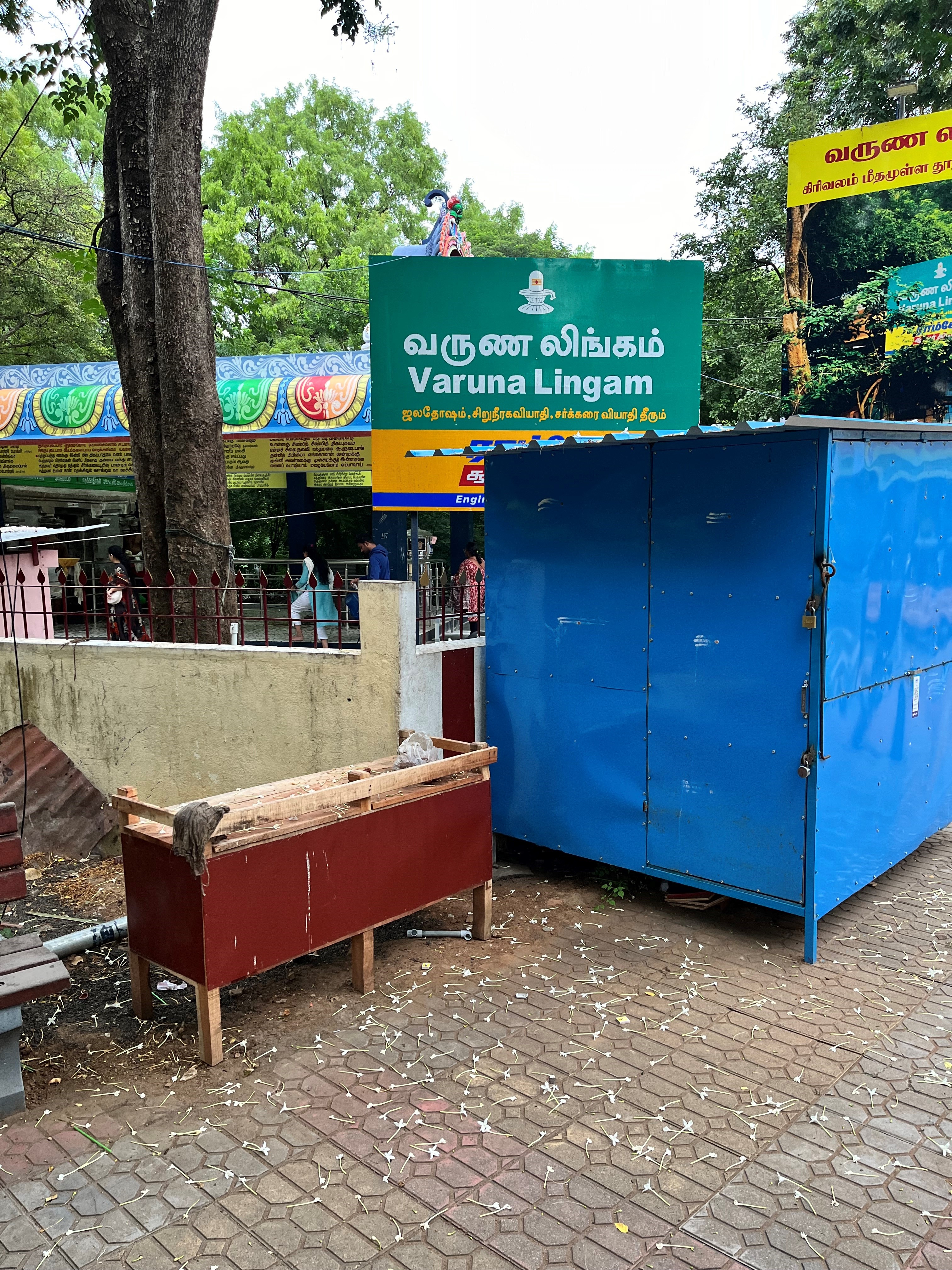
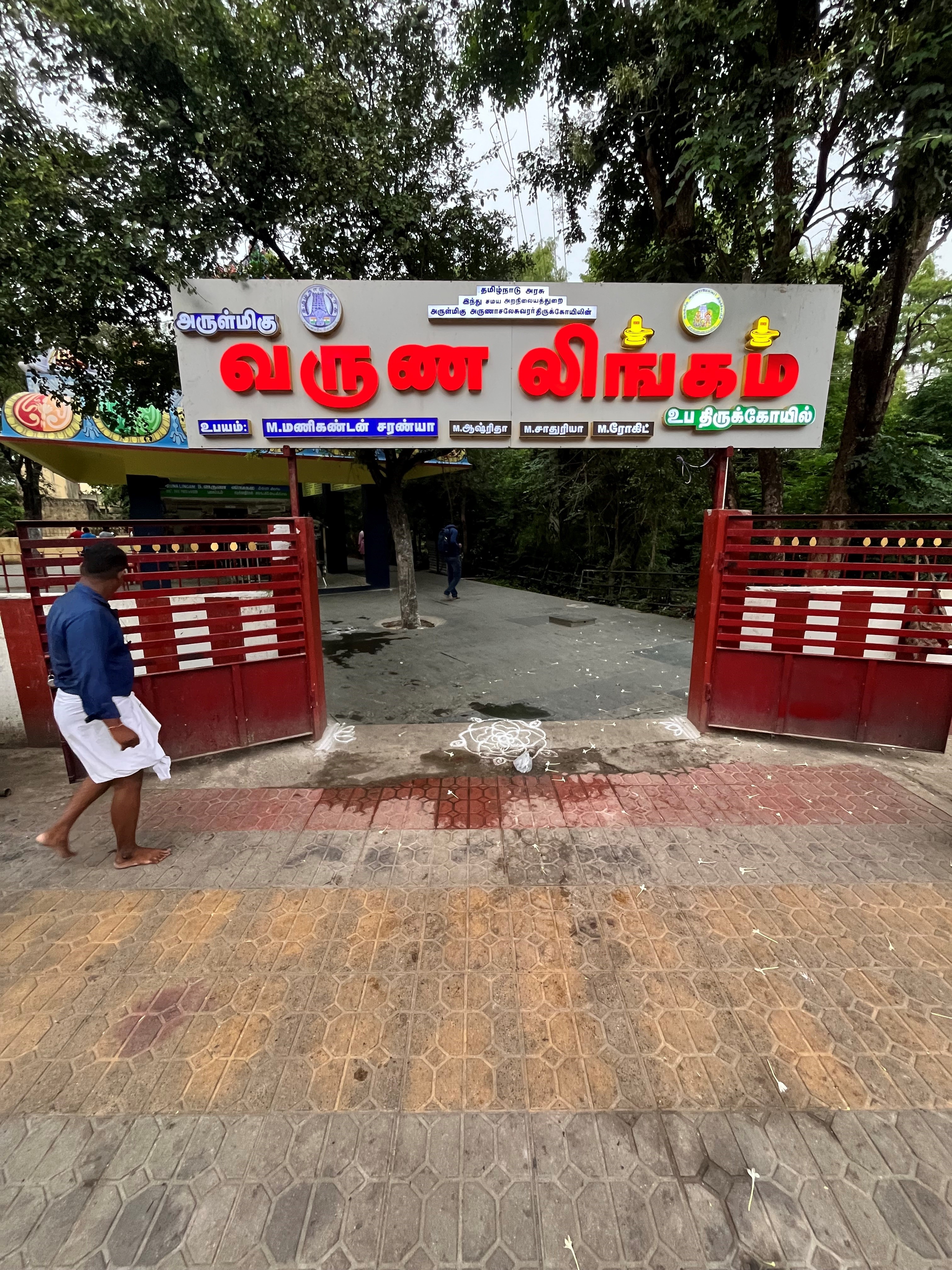
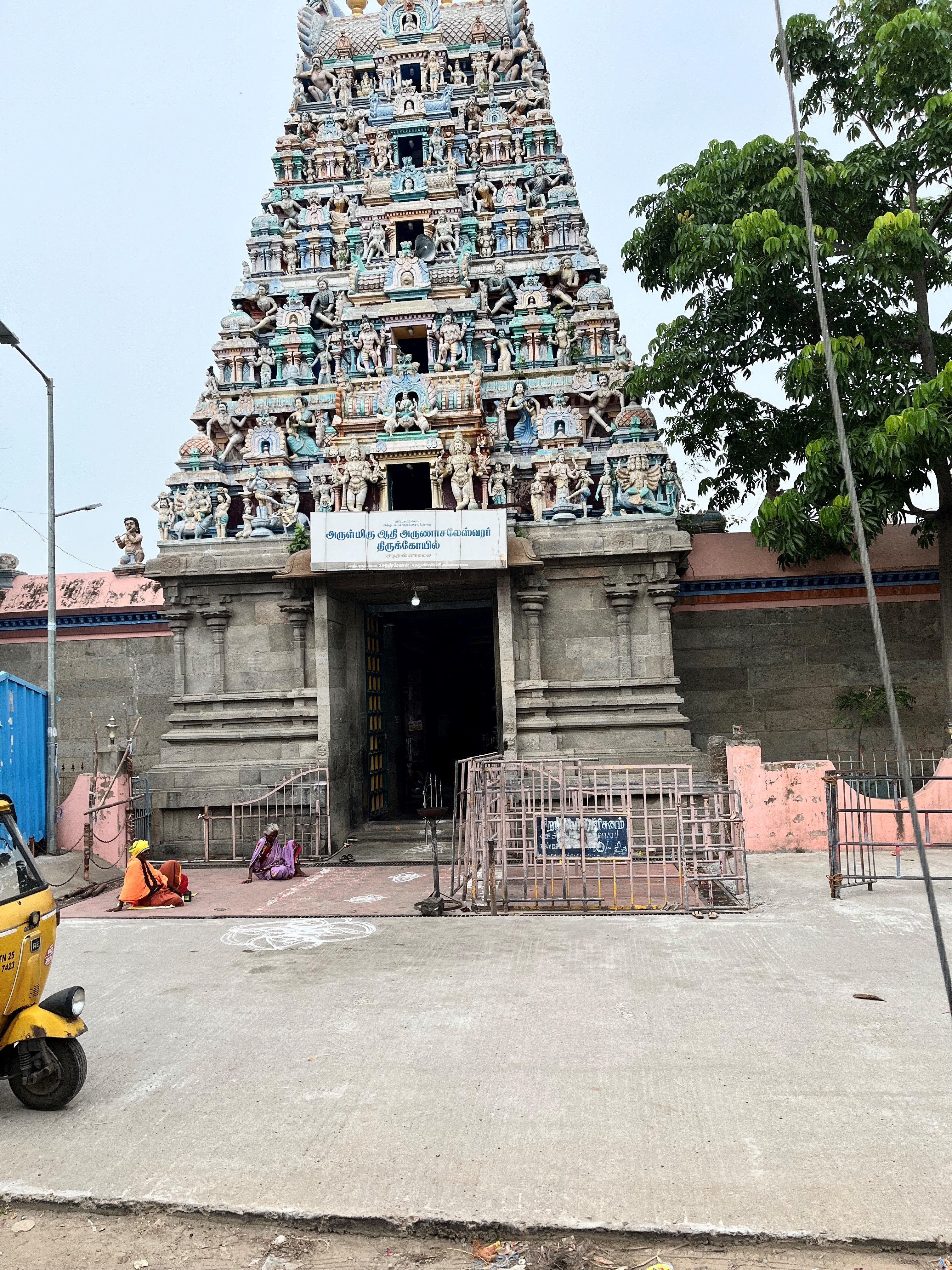
Vayu Lingam, whose cardinal direction is Northwest, was up next. A small temple right on the road. A 10-minute walk, and we were at the Chandra Lingam shrine. Not much crowd here, as we swiftly went in and came out. The sun was beating down now, and it had become quite warm. Pushing ourselves, we walked along to the Kubera Lingam (north), where we could see a bigger crowd. It may be noted that one need not pray at each of the lingams. You can choose, according to your stage of life, your birth star, etc. Then, there are those pilgrims, who do not pray at any of the lingams, but only complete the Giri Valam as a prayer or thanksgiving to Arunachala. Some people do not complete the Giri Valam by walk, but choose to take autorickshaws or taxis, that would halt at every lingam for darshan.
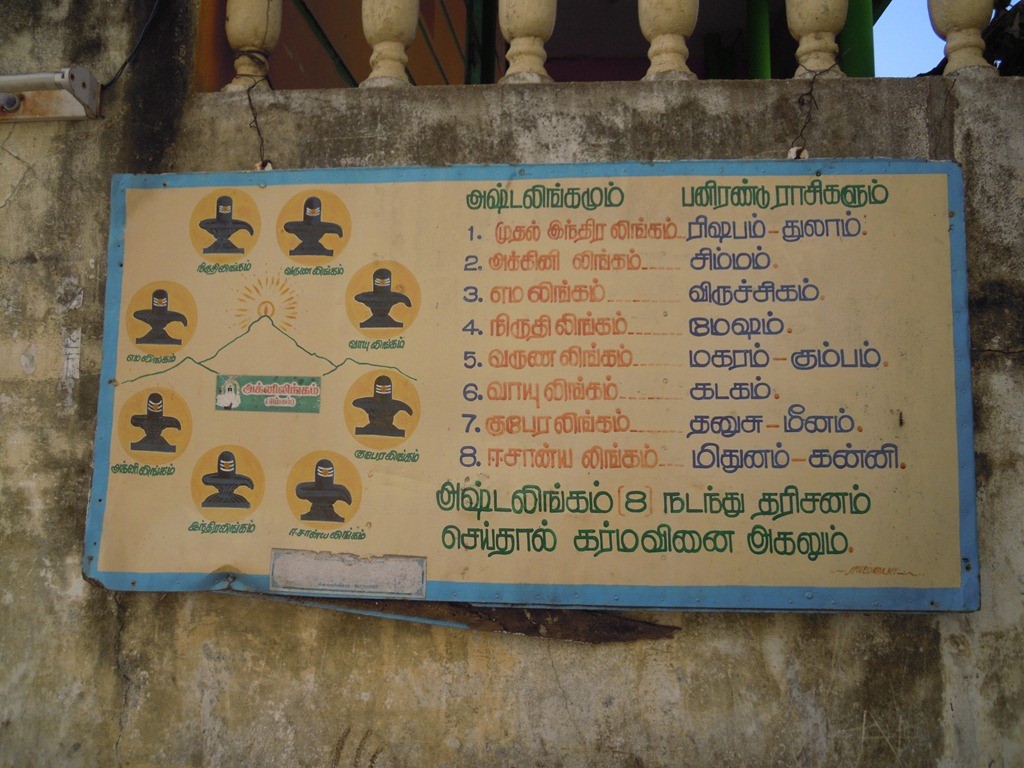
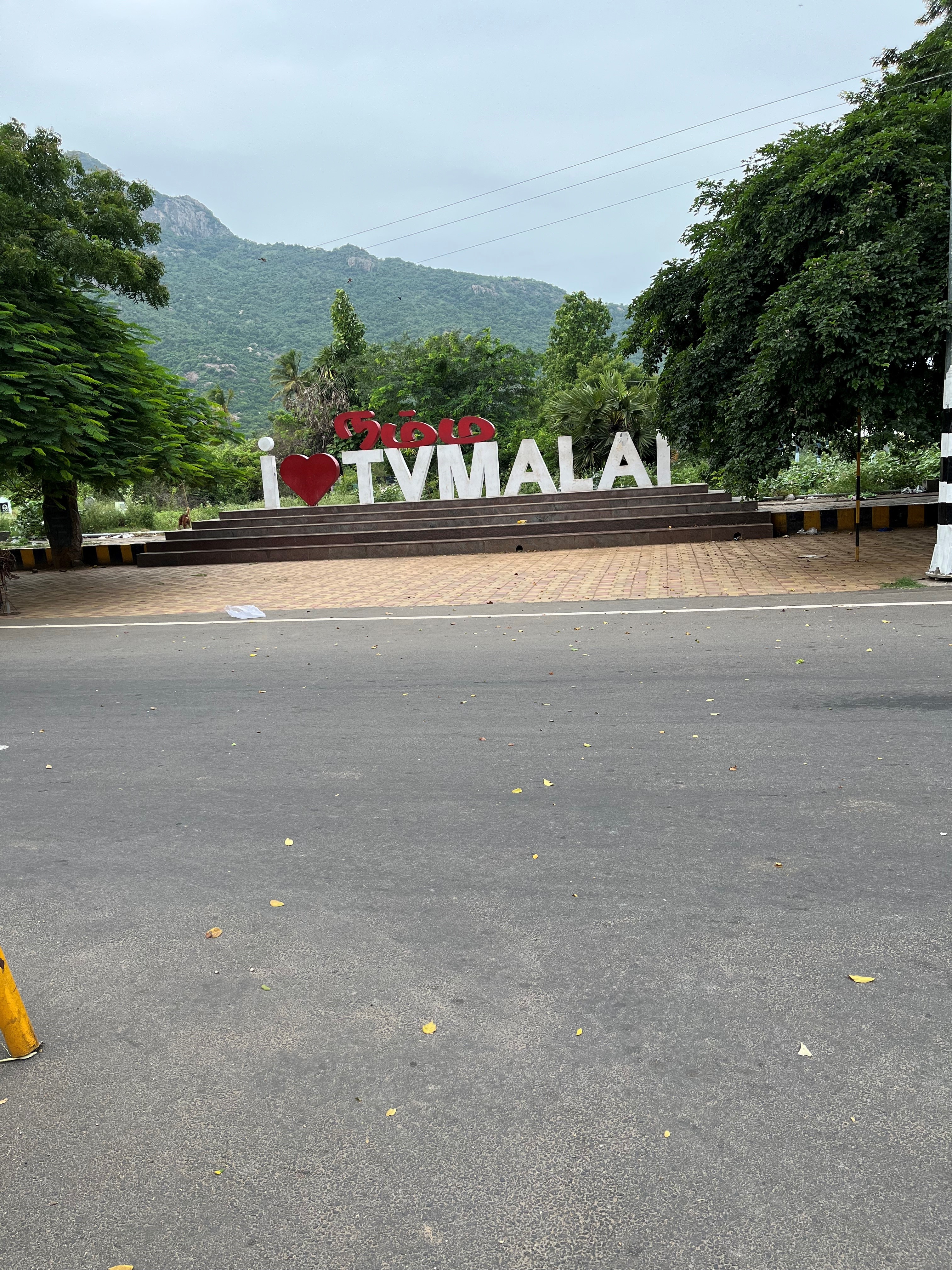
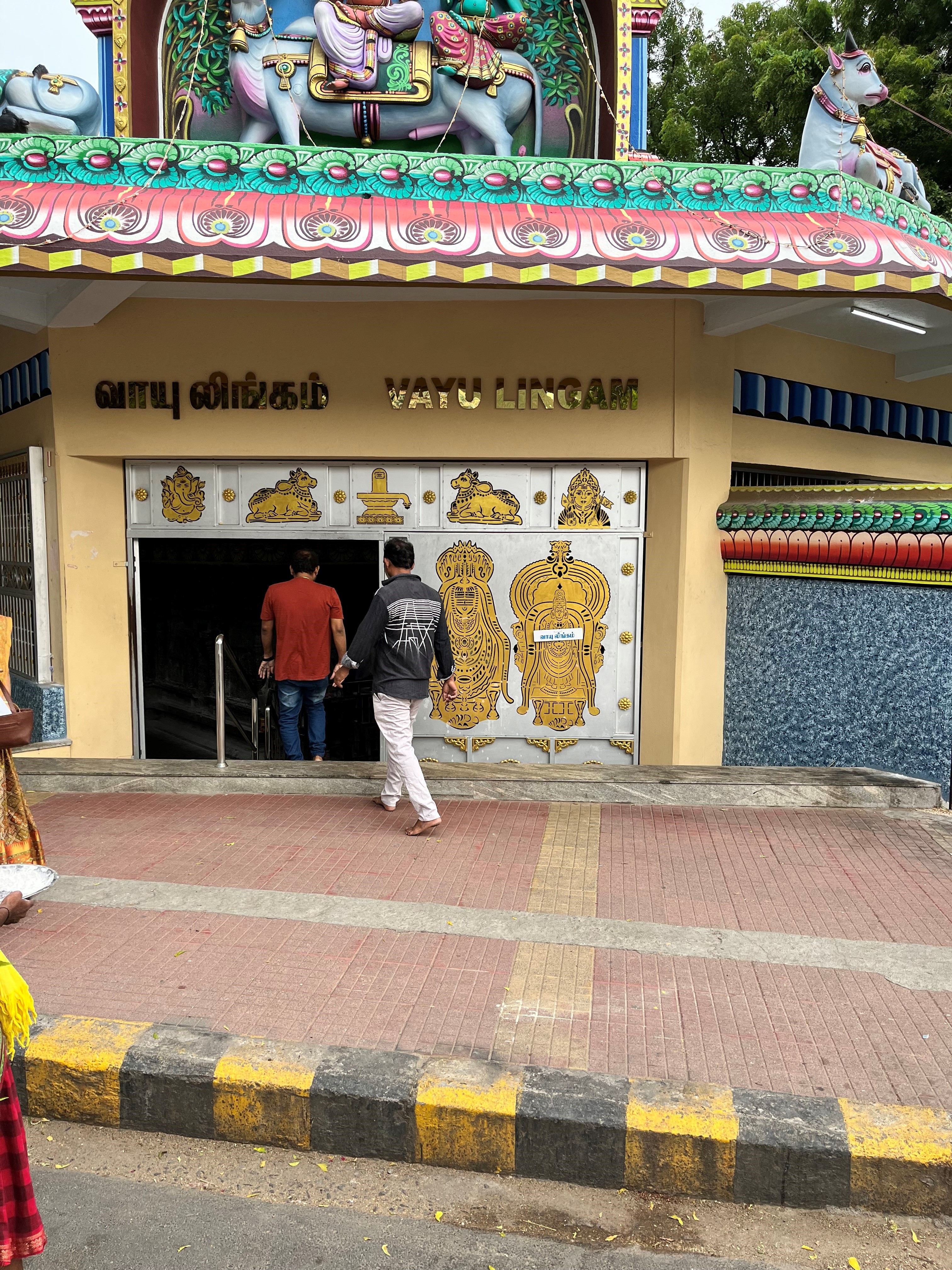
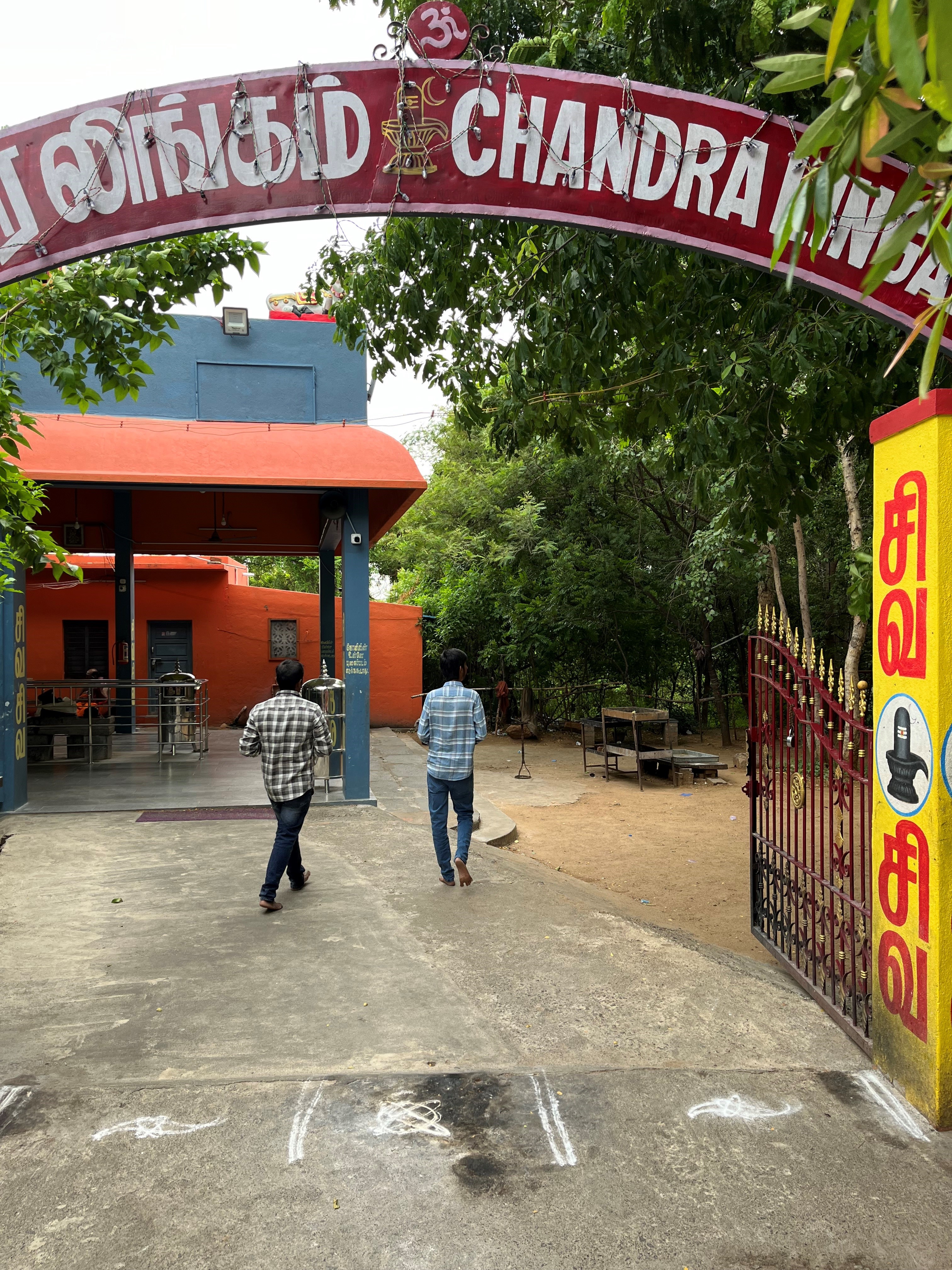
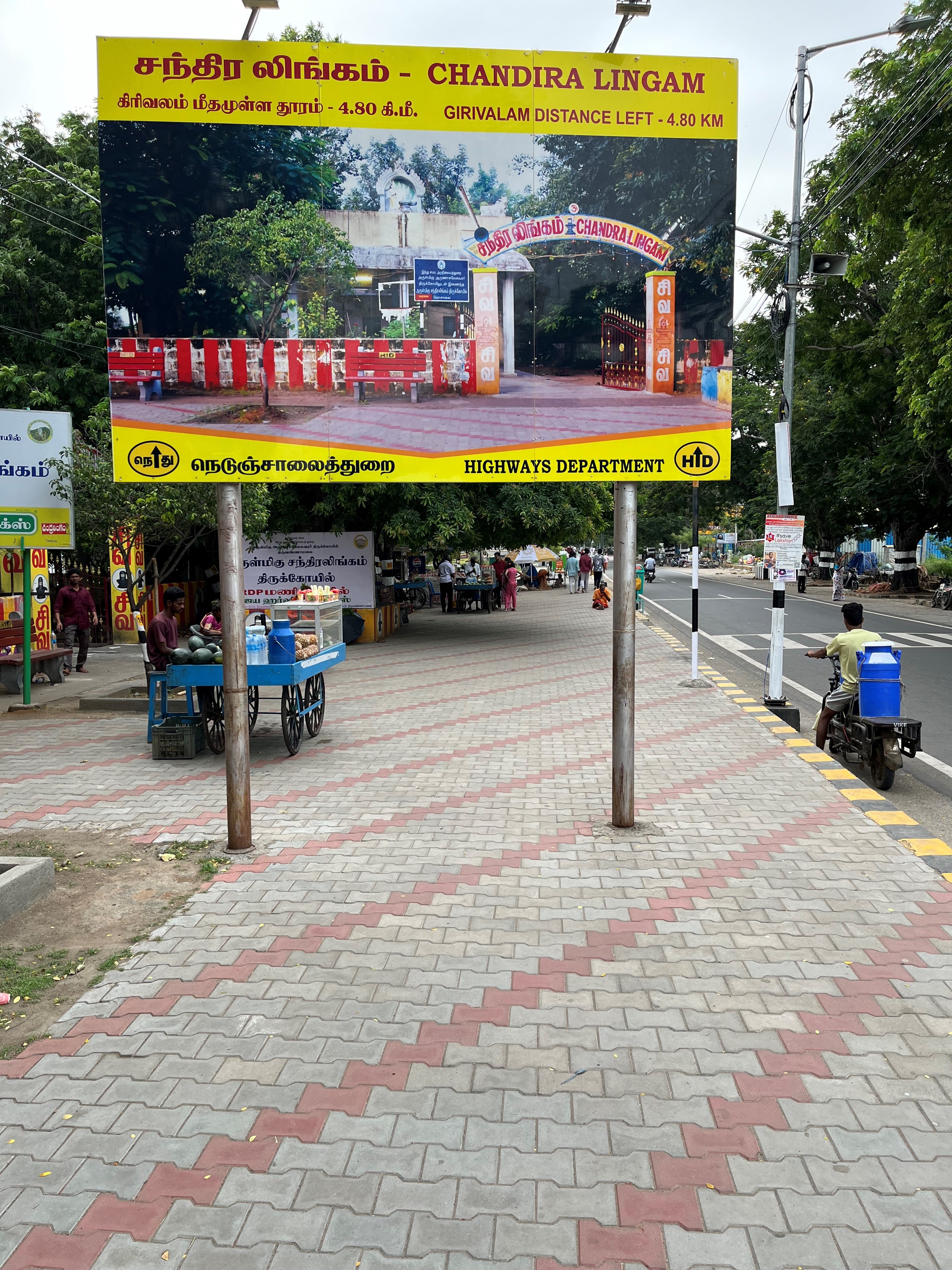
We had walked 10 kilometers and were now re-entering the town of Tiruvannamalai. One more lingam remained — the one in the northeast viz. Esaniya Lingam. The Giri Valam path branches off into a side road, in which one has to walk around a kilometer to reach the last lingam.
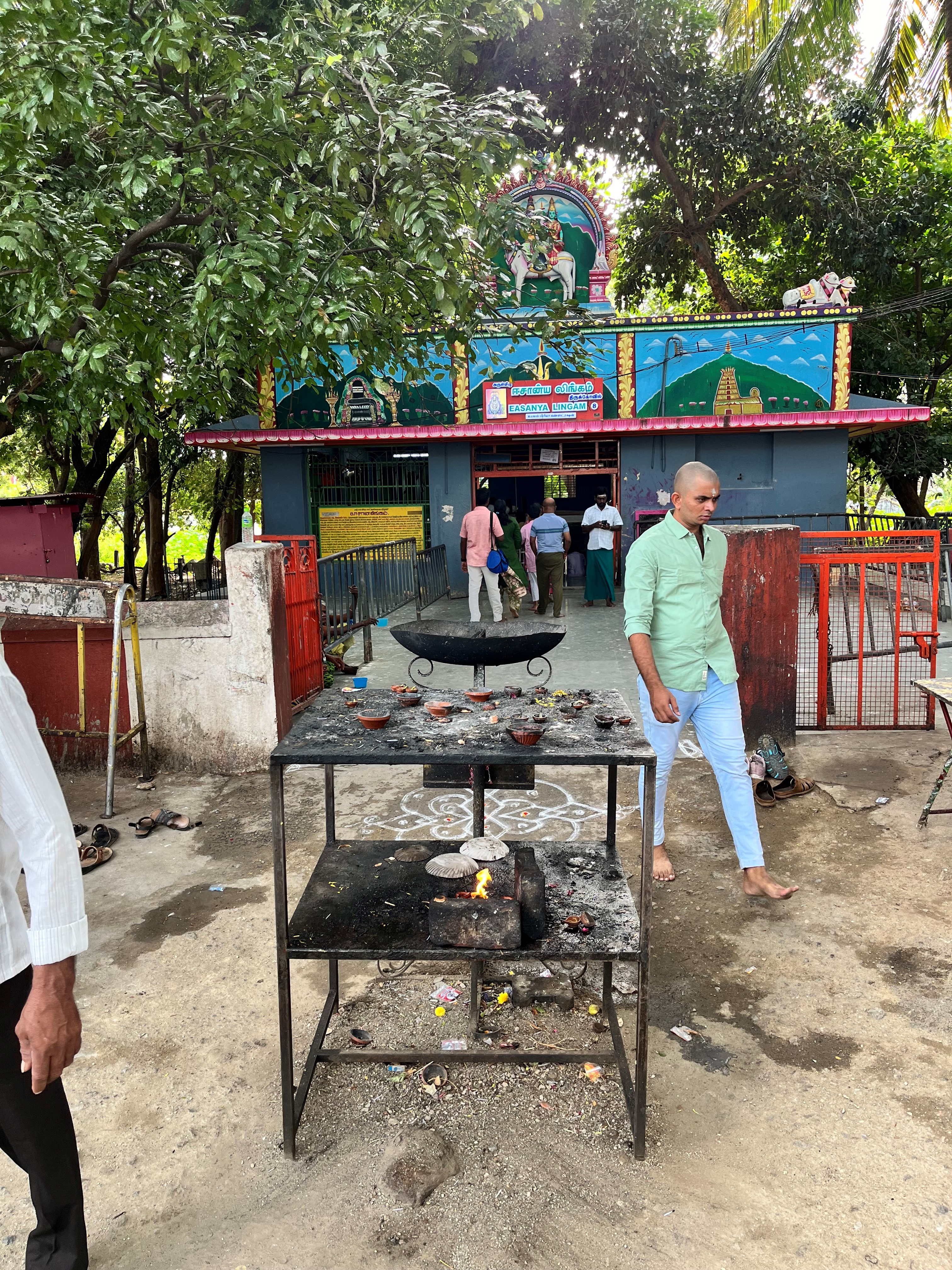
Tired, but satisfied, we completed the darshan and started walking again, a walk towards our hotel. Technically, we had not completed the Giri Valam, as one is expected to walk back right up to (not the Annamalayar temple), but to the first lingam i.e. the Indira Lingam. In our minds we were happy at completing the worship at the 8+2 lingams and felt blessed that Annamalayar had invited us and taken us through the Giri Valam. Not everyone gets the chance. Om Nama Shivaya!
Discover more from BalasBroadcast
Subscribe to get the latest posts sent to your email.